Troubleshooting Your Turf: 10 Solutions for Common Lawn Problems

Many homeowners strive for a healthy, green lawn as part of their outdoor vision. However, achieving that dream can be challenging when faced with various common lawn problems. From pesky weeds to brown patches and compacted soil, these issues can detract from the beauty of your outdoor space. But fear not! In this blog, we will explore 10 effective solutions to tackle these common lawn problems head-on, restoring your lawn to its former glory.
1. Weed Invasion
Weeds are the curse of every gardener’s existence, competing with grass for nutrients and sunlight. To combat this invasion, start by manually removing weeds, ensuring that the entire root system is pulled out to prevent regrowth. Additionally, maintaining proper lawn mowing and watering practices can help promote a healthy lawn that’s more resistant to weed infestation. For persistent weed problems, consider using herbicides, but do so cautiously and responsibly to avoid harming beneficial plants and wildlife.
2. Sparse Grass Growth
Sparse grass growth can leave your lawn looking patchy and unkempt. Address this issue by conducting a soil test to determine any nutrient deficiencies. Fertilize your lawn accordingly to provide your grass with the necessary nutrients for healthy growth. Overseeing your lawn with appropriate grass seed can also help fill in bare patches while ensuring proper watering and drainage, which will encourage robust grass growth throughout your lawn.
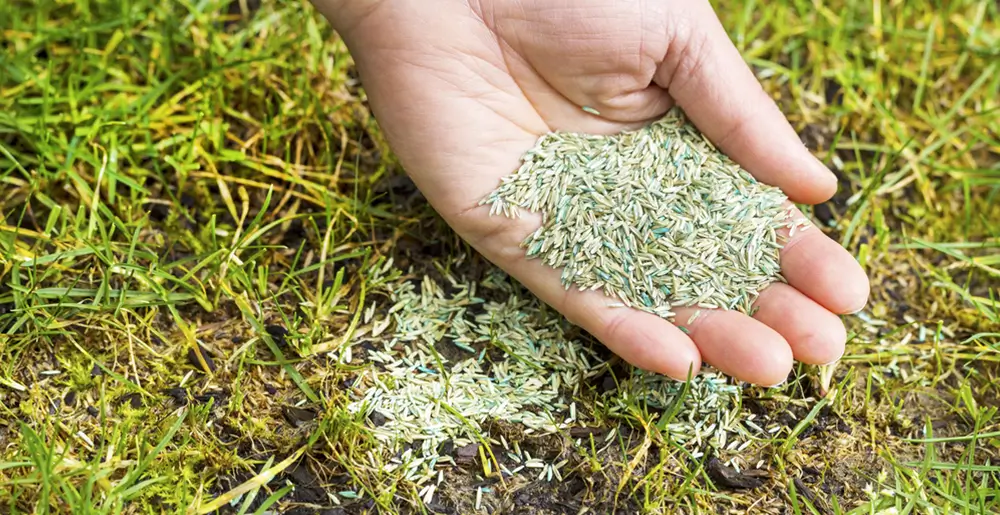
3. Brown Patches
Various factors, including fungal diseases and dog urine, can cause brown spots. Combat this issue by aerating your lawn to improve soil compaction, allowing better water and nutrient absorption. Apply fungicides to treat fungal diseases, following the manufacturer’s instructions carefully. For dog urine spots, dilute the affected area with water and rinse thoroughly to prevent burning and discoloration.
4. Compacted Soil
Compacted soil restricts root growth and inhibits water infiltration, leading to poor lawn health. To alleviate compaction, perform core aeration to loosen the soil and improve air circulation. Additionally, enhance your soil with organic matter to enhance its structure and promote healthier root development. Minimize foot traffic on your lawn to prevent further compaction and maintain soil health.
5. Insect Infestation
Insects like grubs and ants can cause significant harm to your lawn, resulting in extensive damage if left unchecked. Employ biological control methods such as introducing predatory nematodes to target harmful pests while minimizing environmental impact. Consider using organic insecticidal treatments to eliminate pests while preserving beneficial insects. Maintain overall lawn health through proper watering and fertilization to deter insect infestation.
6. pH Imbalance
A balanced soil pH is essential for optimal grass growth and nutrient uptake. Conduct a soil test to determine your lawn’s pH levels and adjust accordingly with lime or sulphur applications. Select grass species that thrive in your soil’s pH conditions to ensure long-term success. Regular soil testing and pH maintenance will promote a healthy growing environment for your lawn.
7. Overgrown Grass
Allowing grass to become overgrown not only detracts from your lawn’s appearance but also impedes healthy growth. Maintain a regular mowing schedule, ensuring you adjust your mower’s height to the appropriate level for your grass type. Use sharp mower blades to achieve clean cuts and prevent tearing, which can make your lawn vulnerable to disease and stress. Consistent mowing will keep your lawn looking neat and encourage dense, lush growth.
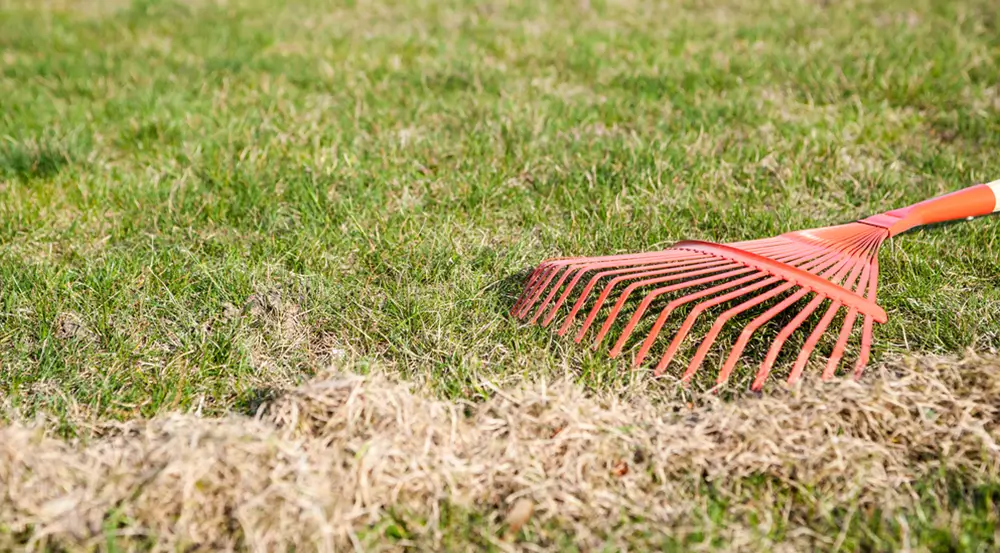
8. Excessive Thatch
Thatch buildup can suffocate your lawn, preventing water and nutrients from reaching the soil. Dethatch your lawn using specialized equipment to remove excess organic matter and promote a healthy growing environment. Aerating your lawn will further facilitate thatch decomposition while improving soil structure and drainage. Implement proper watering and fertilization practices to prevent excessive thatch accumulation in the future.
9. Faded Grass Color
Faded grass colour can be indicative of nutrient deficiencies or drought stress. Perform a soil test to detect any nutrient imbalances and fertilize accordingly to restore a vibrant green colour to your lawn. Ensure adequate watering to prevent drought stress, especially during hot and dry periods. Consider overseeding with more resilient grass varieties to improve colour and density in problem areas.
10. Shaded Areas
Growing grass in shady areas presents unique challenges due to limited sunlight. Select shade-tolerant grass species that can thrive in low-light conditions. Trim back extending branches to allow more sunlight to reach shaded areas, promoting healthier grass growth. Alternatively, alternative landscaping options such as shade-loving plants or mulch beds in heavily shaded areas can be incorporated to enhance visual appeal.
Combatting Common Lawn Problems
Maintaining a healthy, vibrant lawn requires proactive management and attention to detail. By implementing the 10 solutions outlined in this guide, you can effectively address common lawn problems and restore your outdoor space to its full potential. Whether you’re battling weeds, combating brown areas, or dealing with compacted soil, there’s a solution tailored to your specific lawn care needs. With commitment and proper maintenance, you can achieve the lush, green lawn of your dreams.
At Lavington Turf Farms, we understand the challenges of maintaining a beautiful lawn. With our expertise and high-quality turf products, we’re here to help you achieve the lawn of your dreams. Contact us today to learn more about how Lavington Turf Farms can help you transform your outdoor space.
Mastering Lawn Care: Your Comprehensive Guide to Year-Round Lawn Maintenance
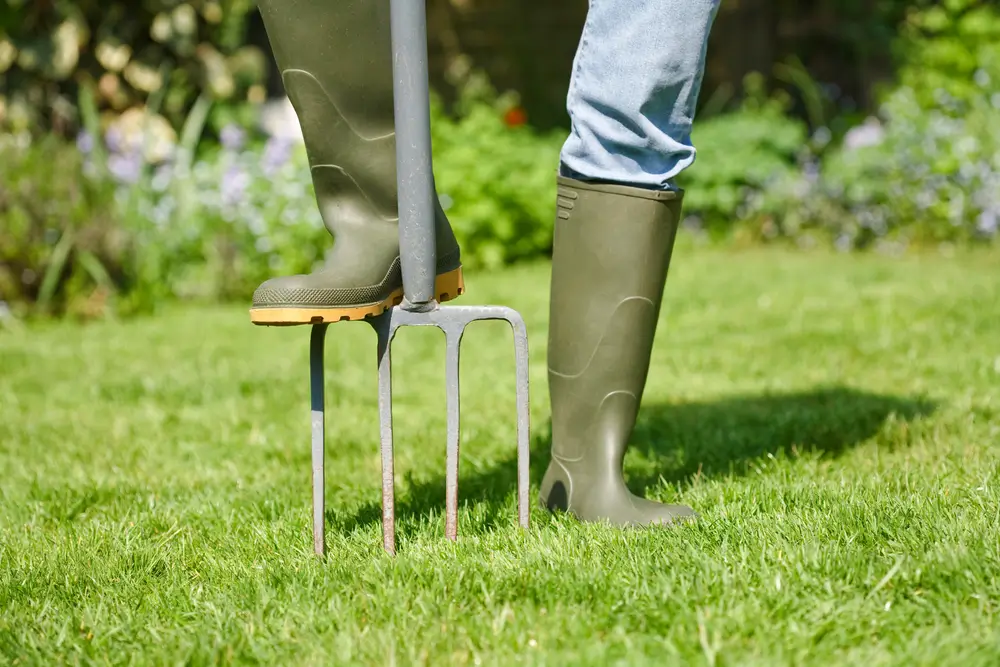
Any homeowner takes pride in a lush and vibrant lawn, but achieving and maintaining such a lawn requires dedication and know-how in year-round lawn maintenance. From rejuvenating spring growth to preparing for winter dormancy, each season brings unique challenges and opportunities to guarantee your lawn remains healthy and beautiful. In this comprehensive guide, we’ll explore essential lawn maintenance tips tailored to each season, emphasizing the importance of year-round lawn maintenance to keep your lawn in top condition.
Spring Lawn Care: Renewal and Growth
As the warmth of spring arrives, it’s time to kickstart your lawn’s growth and renewal.
- Rise and Shine: Begin by clearing debris and assessing any winter damage, such as thatch or bare spots. Raking or dethatching can help remove dead grass and promote air circulation.
- Feed and Nourish: Apply a balanced fertilizer to provide essential nutrients for abundant spring growth. Consider overseeding to fill in sparse areas and introduce new grass varieties for improved resilience.
- Weed Control: Apply pre-emergent herbicides early in the season to stay ahead of weeds. Hand-pull any emerging weeds to prevent them from establishing and competing with your grass for nutrients and water.
- Mowing Tips: Adjust your lawn mower to a higher setting and mow frequently to encourage healthy growth and discourage weed development. To avoid stressing the grass, only remove up to one-third of the grass blade length at a time.
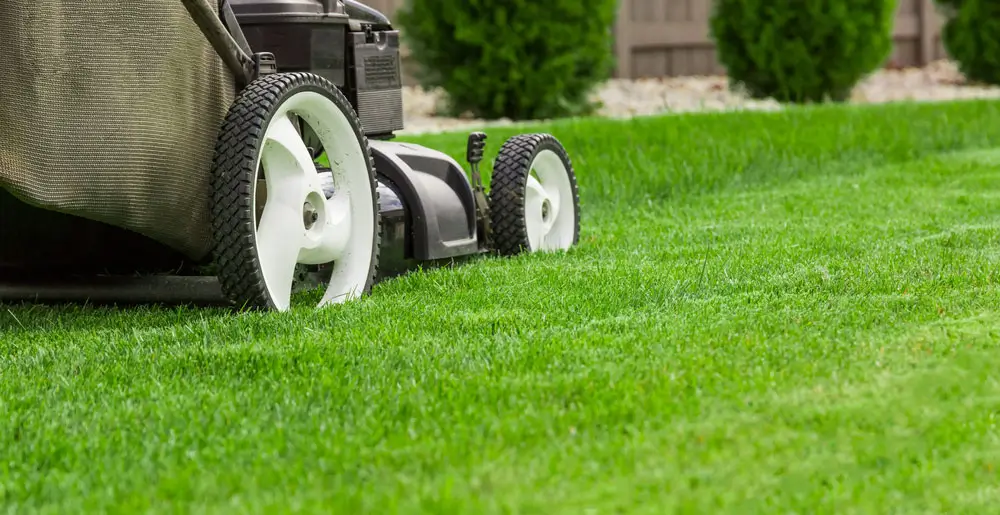
Summer Lawn Care: Beat the Heat
Summer months bring their own set of challenges as temperatures rise and rainfall may decrease.
- Hydration Matters: Water deeply and infrequently to promote deep root growth. Water early in the morning to minimize evaporation and fungal growth. Aim to provide your lawn with about 1 to 1.5 inches of water per week, which also includes rainfall.
- Pest and Disease Management: Look for indications of pests and diseases, such as brown patches or chewed leaves. Treat as necessary and ensure proper airflow by pruning overhanging branches and thinning dense foliage.
- Mowing Practices: Continue mowing high to shade the soil and promote moisture retention. Avoid mowing during the heat of the day to prevent stress on the grass. Keep mower blades sharp to make clean cuts and minimize damage to grass blades.
- Shade Management: Trim back overhanging branches to allow more sunlight to reach shaded areas of the lawn. Consider alternative landscaping options for areas with persistent shade, such as ground covers or shade-tolerant grass varieties.
Fall Lawn Care: Prep for Winter
As temperatures cool, it’s time to prepare your lawn for the dormant winter months.
- Leaf Management: Regularly remove fallen leaves from the lawn to prevent suffocation and disease. Consider mulching leaves with a mower to provide natural nutrients for the soil.
- Final Fertilization: Apply a slow-release fertilizer to provide essential nutrients for winter resilience and early spring growth. Opt for a fertilizer containing increased potassium levels to fortify grassroots and enhance cold resistance.
- Aeration and Overseeding: Aerating the soil helps alleviate compaction and allows nutrients and water to penetrate deep into the root zone. Overseed thin or bare areas to promote a thick, healthy lawn that can better compete with weeds.
- Disease Prevention: Keep the lawn free of debris and ensure adequate airflow to prevent fungal diseases. Rake up thatch and aerate to improve drainage and lower moisture levels, which can contribute to fungal growth.
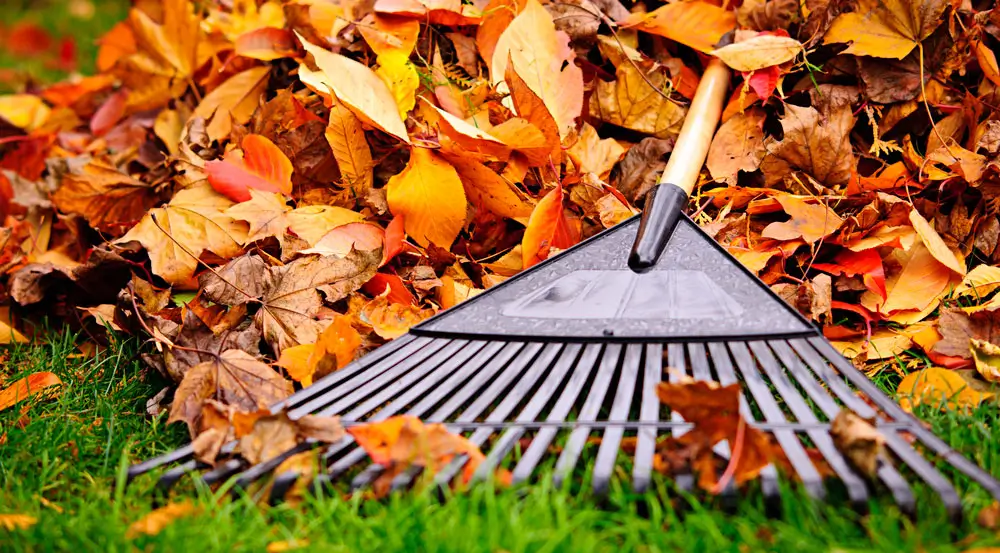
Winter Lawn Care: Lay the Groundwork for Spring
As the lawn enters dormancy, there are still steps you can take to have a successful spring revival.
- Snow and Ice Management: Clear snow promptly to prevent compaction and suffocation of the grass. Avoid using salt-based deicers, which can harm grass and soil. Instead, use sand, kitty litter, or environmentally-friendly ice melt products.
- Equipment Maintenance: Clean and properly store lawn equipment to prevent rust and damage during winter. Sharpen mower blades and perform any necessary repairs to ensure they’re ready for use in the spring.
- Planning and Prep: Use the winter downtime to plan for spring lawn care tasks, such as soil testing and renovation projects. Consider any changes or improvements you’d like to make to your lawn, such as adding landscape features or adjusting irrigation systems.
- Soil Testing: Take advantage of the quieter winter months to conduct a soil test. Use the results to adjust your fertilization and pH management plan for the upcoming growing season. Amend the soil as needed to correct imbalances and optimize nutrient availability for healthy grass growth.
Ensure Your Lawn is in Top Condition
Maintaining a healthy lawn throughout various times of the year requires diligence and attention to detail, but the results are well worth the effort. By following these seasonal, year-round lawn maintenance tips, you can ensure your lawn remains lush, vibrant, and resilient despite the changing weather conditions.
Remember, a well-maintained lawn not only enhances the look of your property but also provides a welcoming space to relax and enjoy throughout the year. Get set to take care of your lawn throughout the year by rolling up your sleeves, gathering your tools, and preparing to give it the care it deserves!
Lavington Turf Farms proudly serves a wide range of areas, including Vernon, Coldstream, Lumby, Salmon Arm, Sorrento, Revelstoke, Kamloops, Kelowna, Penticton, the Kootenays, and Caribou, extending all the way to the USA border. With our expertise and commitment to quality, we can assist you in achieving your landscaping goals and guide you through year-round lawn maintenance, ensuring a vibrant and healthy lawn for years to come.
The Environmental And Economic Benefits Of Using Locally Sourced Sod
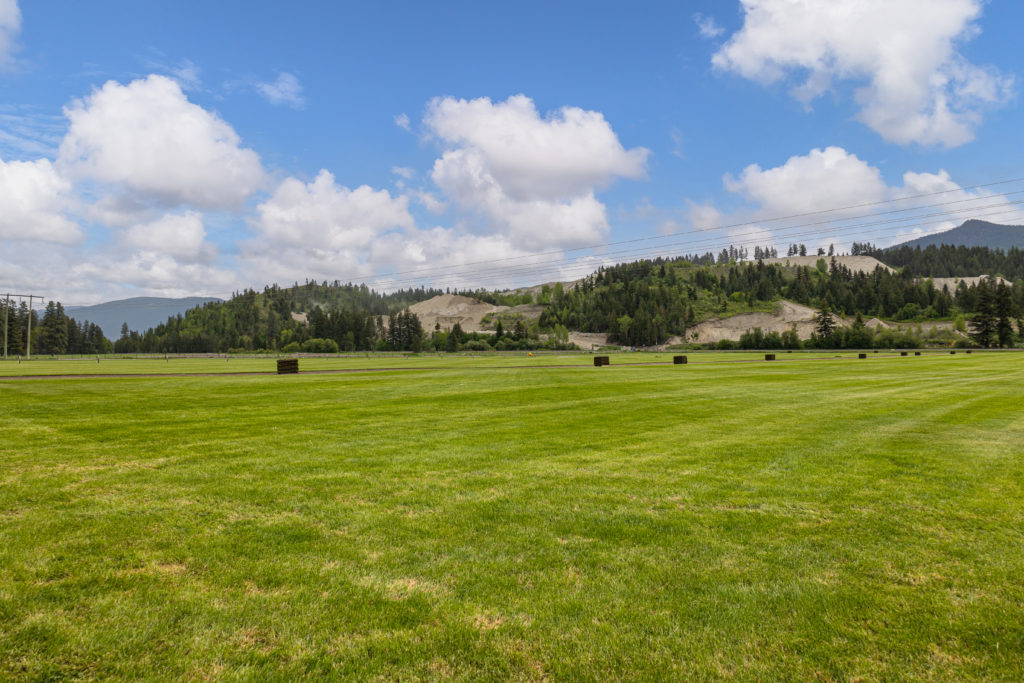
In a time when people are increasingly mindful of the environment, and economic considerations are more important than ever, the materials we use for landscaping are becoming more and more important. One choice that’s gaining popularity for being both environmentally friendly and easy on the budget is to go for locally grown and sourced sod. It’s not just a win for the environment; it’s a boost for the local economy as well.
Reducing Carbon Footprint
Transportation of goods over long distances contributes significantly to carbon emissions. Choosing locally grown sod drastically reduces the carbon footprint associated with its delivery. When you purchase sod grown nearby, not only is your sod fresher, it doesn’t have to travel thousands of miles to reach your property. This reduction in transportation emissions helps combat climate change and ensures cleaner air for our community.
Promoting Biodiversity
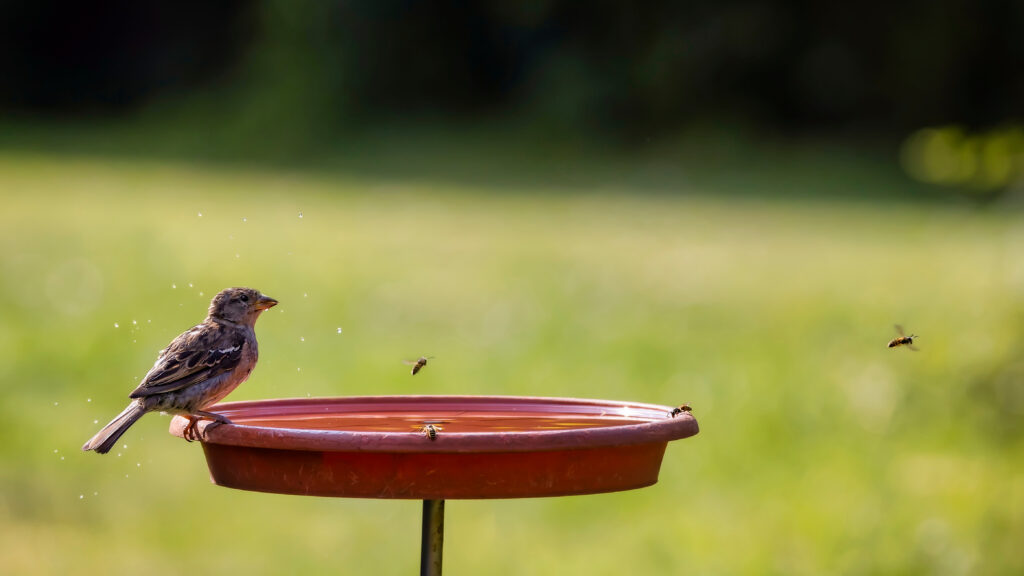
Local sod doesn’t just make your lawn beautiful; it also does wonders for our local wildlife. The native grasses and plants that come with locally sourced sod, like the Kentucky Bluegrasses blended with Fescue we supply at Lavington Turf Farm, become essential homes and food sources for neighborhood critters, like birds and insects. So, when you choose local sod, you’re helping to protect the natural balance of our local ecosystems.
Water Conservation
Locally grown sod is typically well-suited to our region’s climate and soil conditions. This means it requires less water to thrive compared to sod varieties from distant locales. Less water usage translates to lower utility bills for homeowners and reduces the strain on local water resources, which is especially crucial in areas with water drought issues. Typically, to maintain your sod in the Okanagan region, you’d only need to give it about 1 inch of water each week. This approach encourages your grass to develop deep roots, which helps it withstand dry spells. Be sure to check with your local turf farm for their recommended watering guidelines.
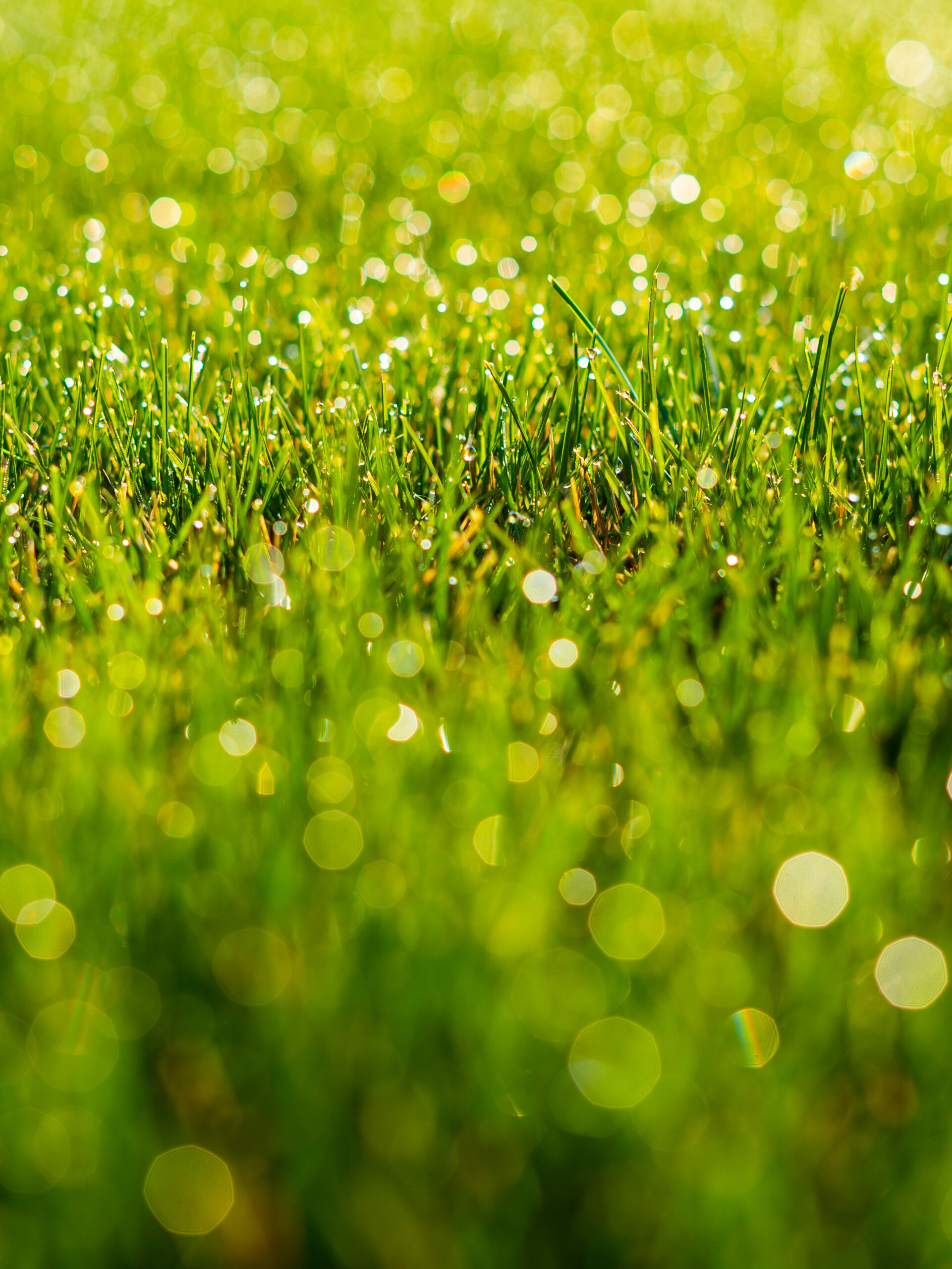

Supporting Local Economy
Local sod is more than just grass; it’s a source of livelihood for many. Every local sod farm creates jobs, from the hardworking farmers and cultivators to the dedicated delivery drivers. The money you spend stays within the region, benefiting everyone, from farmers to retailers.
Enhanced Durability
Locally grown sod is more likely to thrive in your specific climate and soil conditions. It’s acclimated to the local weather patterns, which means it has a higher chance of flourishing once installed. This can reduce the need for costly replacements, yard maintenance, and repairs, ultimately saving you money.
Local Expertise
Behind every successful garden is a knowledgeable gardener, and behind every lush lawn of local sod is a local sod farmer. These experts possess in-depth knowledge of our region’s specific needs, ensuring that you receive not only quality sod but also tailored advice and guidance. Having your local sod farmer in your backyard allows you to have access to them if and when any problems may arise with your lawn.
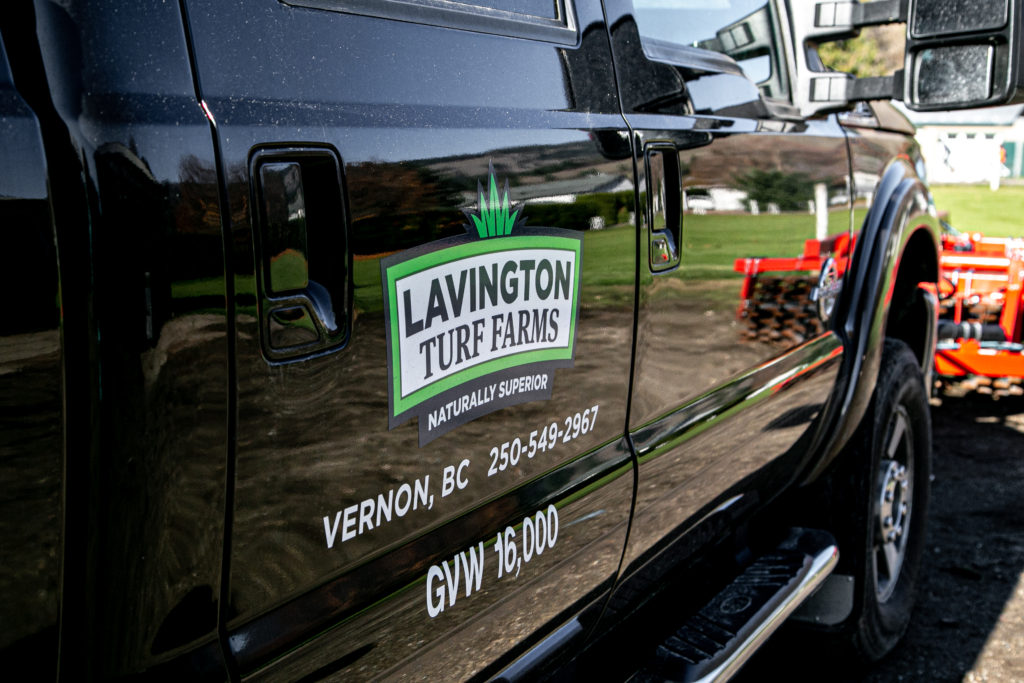
Opting for locally grown and sourced sod isn’t just a choice; it’s a commitment to a greener and more prosperous future. This sustainable practice reduces our carbon footprint, nurtures biodiversity, and conserves water, all while strengthening our local community through job creation and economic growth.
We are excited to serve as your reliable supplier of local sod in both the Okanagan area and neighboring regions. Here at Lavington Turf, our focus extends beyond providing high-quality, locally-cultivated sod. We are committed to promoting sustainability and contributing to the growth of the community.
Whether you live in the Okanagan, Vernon, Coldstream, Lumby, Salmon Arm, Sorrento, or any of the surrounding areas within our proud service range – which includes Kamloops, Kelowna, Penticton, Kootenays, Caribou, and all the way to the USA Border – you can count on us to meet your needs!
Learn more about turf with our other blogs:
- Top Tips For Sod Installation
- Time To Start Laying Some Turf!
- The Benefits Of Real Grass
- 4 Key Tips To Preparing Your Yard For New Sod
Handling Weeds and Maintaining Your Lawn
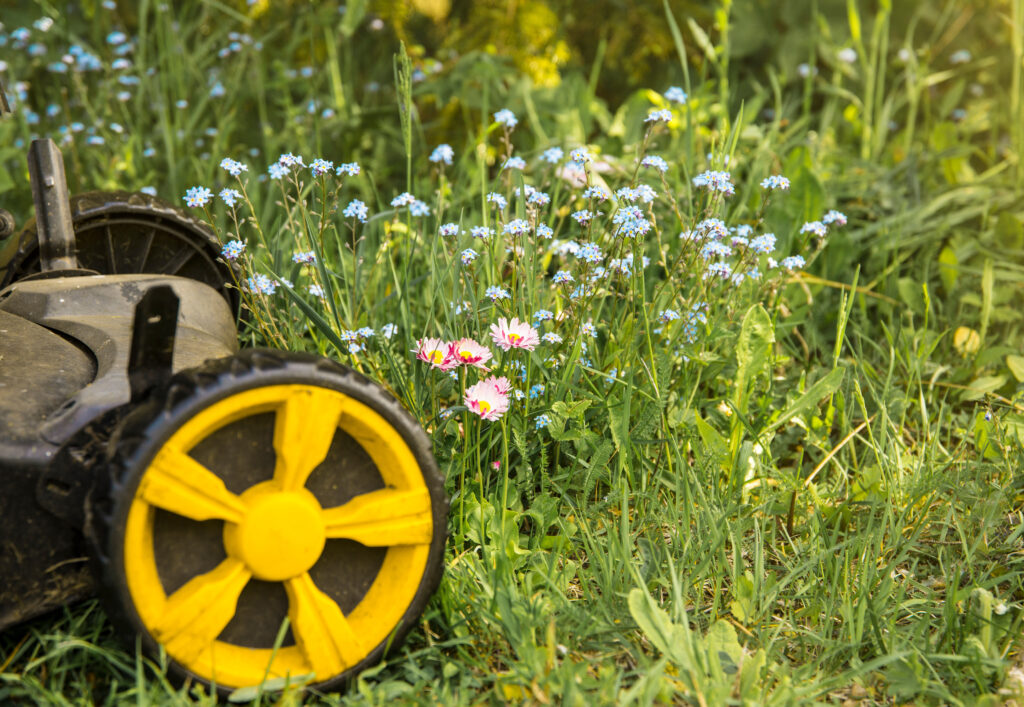
Don’t let pesky weeds ruin the beauty of your yard. Since many weeds grow low and can go unnoticed by mowers, it’s important to know how to effectively manage them. In this blog, we will explore common weeds that appear with turf, methods to prevent and remove them, and tips for maintaining a weed-free yard. If you are looking to spruce up your yard’s landscaping, we’ve got you covered with all the tips and tricks to maintain a healthy, green, and weed-free lawn.
One of the first steps in effective weed management is being able to identify the culprits. Here are three common weeds that often make an unwelcome appearance in turf:
1. Dandelions: Dandelions are recognizable by their bright yellow flowers and fluffy seed heads. They spread quickly and can take over large areas of your lawn if left unchecked.
2. Clover: Clover is characterized by its three-leaf clusters and is often found in patches within the turf. While some homeowners may appreciate its appearance, others consider it a weed that needs to be controlled.
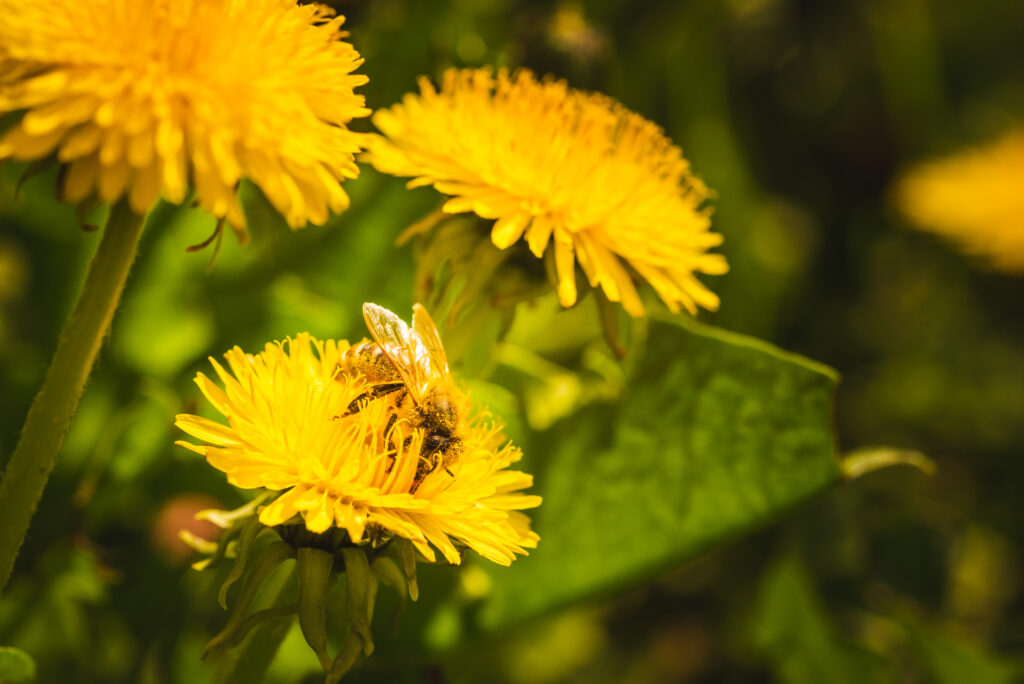
3. Crabgrass: Crabgrass is an annual weed that thrives in thin or bare spots on the lawn. It has wide, flat blades and can quickly overrun the surrounding turf if not dealt with promptly.
To create a weed-resistant environment, it is essential to implement preventive measures:

•Do not over-fertilize: While giving your grass a nutrient boost is important, going overboard with fertilization can actually encourage weed growth. Follow recommended guidelines for your local area and consider the specific needs of your grass type and the local conditions.
•Avoid over-watering: Too much water not only weakens your grass but also creates the perfect breeding ground for weeds. Water deeply but less frequently to promote deep root growth in your grass and deny those pesky weeds the moisture they crave.
When those weeds do manage to pop up, it’s time to take action! Here are some effective methods to bid them farewell:
1. Hand pulling: For smaller infestations, grab those gloves and start pulling weeds by hand. Make sure you get the entire root system out to prevent regrowth.
2. Herbicides: Selective herbicides come to the rescue when you need to target specific weeds while leaving your turf unharmed. Just be sure to follow the instructions carefully, and if you’re unsure, don’t hesitate to consult a professional for herbicide selection and application.
3. Natural remedies: If you prefer a more eco-friendly approach, you can try using vinegar or boiling water to zap those weeds. Keep in mind that these natural alternatives may not be as effective on larger or perennial weeds, but they work well for spot treatments.
4. Using weed-pulling tools: Streamline the process of weed removal with convenient tools that make the task a breeze. The weed puller/grabber is a handy tool equipped with jaws designed to firmly grip the weed at its base. With a simple squeeze and pull, you can effortlessly extract the weed without breaking a sweat. Another useful tool is the weed popper, featuring a leverage system that provides the necessary force to pop out weeds, roots, and all. This ensures a clean removal, preventing regrowth and leaving your garden looking neat and tidy.
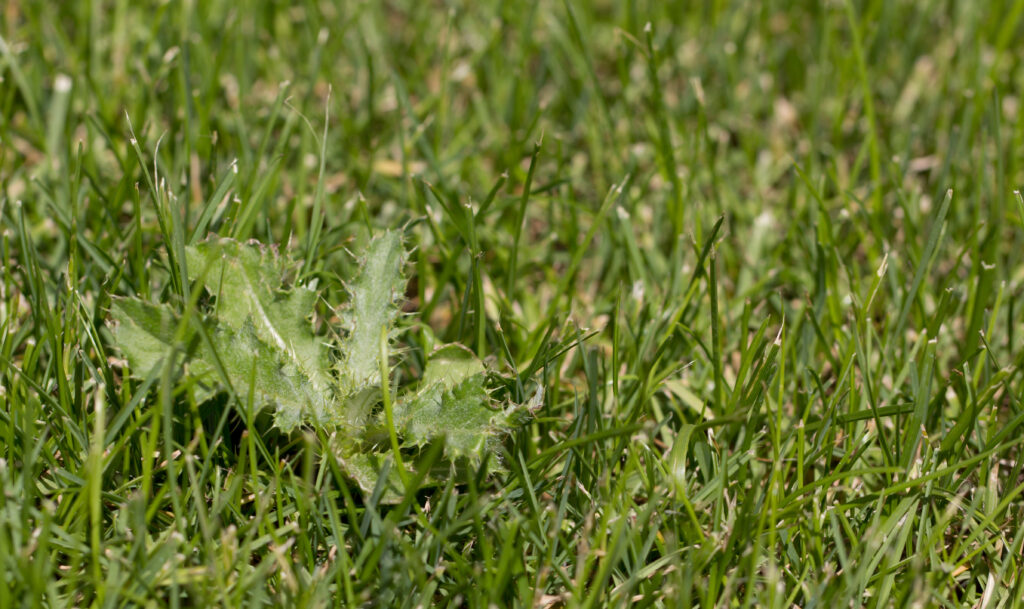
Conquer Your Weeds
You’ve conquered the weeds, but how do you keep them at bay? Firstly, regular mowing is crucial; keeping your grass at the recommended height for your turf type helps shade out weed seeds and prevent them from germinating. Secondly, proper fertilization is important. Ensure your lawn receives the necessary nutrients while avoiding fertilizers that may promote weed growth. Lastly, maintain a consistent watering schedule. Providing adequate moisture to your lawn while avoiding excessive watering helps keep weeds at bay.
By staying proactive with lawn maintenance, you can prevent weed growth and enjoy vibrant, weed-free turf. Whether you are like us and own an Okanagan sod farm, or are focused on yard maintenance and want your lawn to look top-notch, the practices outlined in this guide will help you effectively manage and eliminate those pesky weeds. So go ahead, show off your beautiful, healthy, and weed-free lawn all year round! Contact us directly by phone at (1-250-549-2967) with any questions about our turf and your lawn care needs or fill out our contact form on our website. You can learn more about us here too.
Learn more about turf with our other blogs:
- Top Tips For Sod Installation
- Time To Start Laying Some Turf!
- The Benefits Of Real Grass
- 4 Key Tips To Preparing Your Yard For New Sod
Turf With Pets
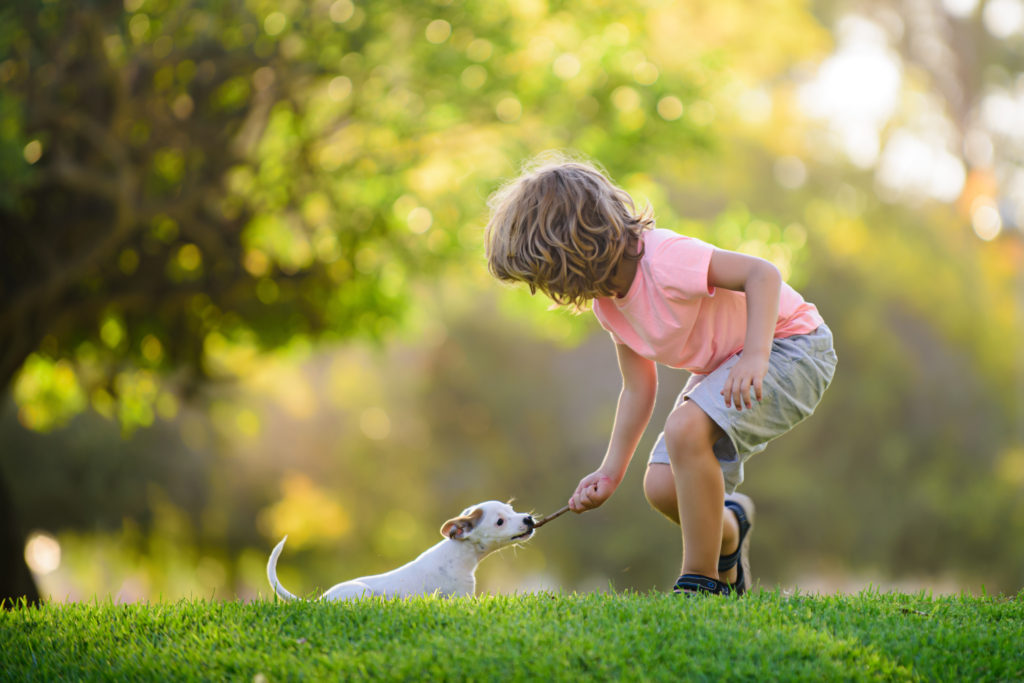
Having pets brings us happiness, but it’s no secret that they can wreak havoc on our lawns. If you’re a proud pet owner seeking a gorgeous and pet-friendly lawn, consider turf as your saving grace. In this blog, we’ll delve into the benefits of turf for pet owners and share some valuable tips on installing and maintaining it while keeping your furry friends in mind.
The Benefits of Turf for Pet Owners
When it comes to pet-friendly lawns, turf offers several advantages. Firstly, it offers easy installation and requires low maintenance compared to natural grass. With turf, you can say goodbye to constant mowing, watering, and fertilizing. It saves you time and effort, allowing you to spend more quality time with your pets.
Turf is also durable and designed to withstand the playful activities of your pets. Whether they’re running, chasing, or rolling around, the turf can handle it without getting easily damaged. This durability ensures that your lawn remains intact, providing a safe and enjoyable space for your furry friends.
Choosing top-quality turf from Lavington Turf Farms, or another local farm; like Kamloops Turf Farms, Vernon Turf, and other reputable providers is also environmentally-friendly. Turf reduces the need for harmful pesticides and fertilizers, creating a healthier environment for both your pets and the ecosystem. With high quality turf, you can be assured that your pets can roam and play on a surface that is free from toxic chemicals.
Installing Turf with Pets Around
When installing turf with your furry friends in mind, there are a few important factors to consider. You must make sure to prepare the area adequately. This includes having proper base layers, including organic top soil, beneath the turf, which play a crucial role in managing pet waste and promoting absorption. By doing so, you can keep your lawn cleaner and more hygienic for both you and your pets.
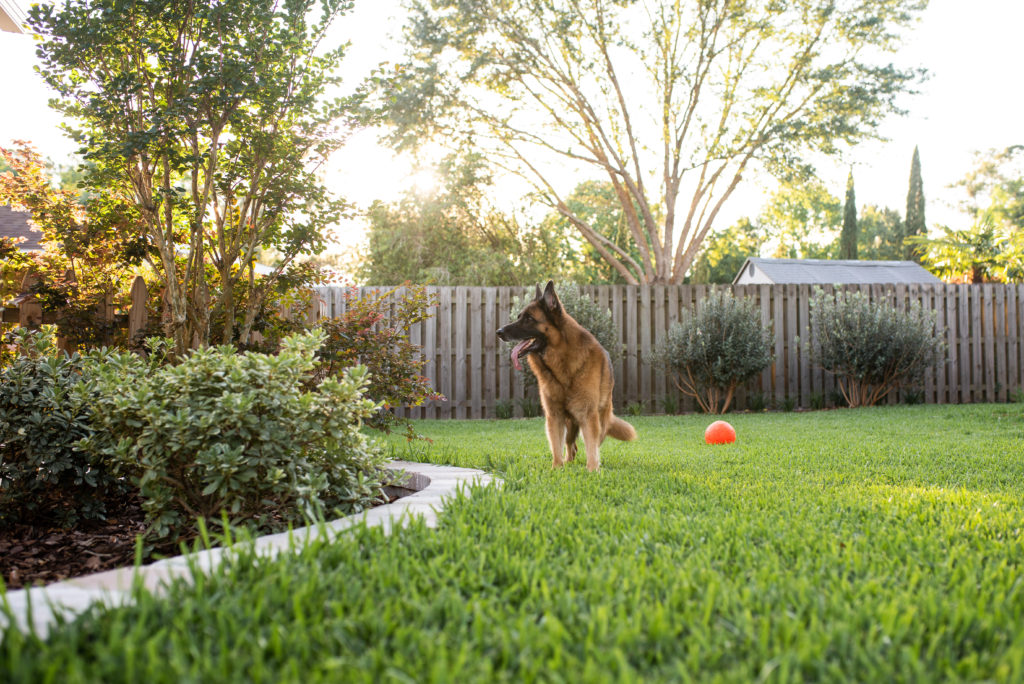
In order to give the turf the best chance to establish roots and avoid any potential damage, it’s important to keep your pets away from the turf / sod until you start to notice visible growth. This initial period is crucial for the turf to thrive and become more resilient to the playful activities of your pets. It may require some patience on your part, but it will ultimately lead to a healthier and more durable lawn for everyone to enjoy.
Maintaining Turf When You Have a Pet:
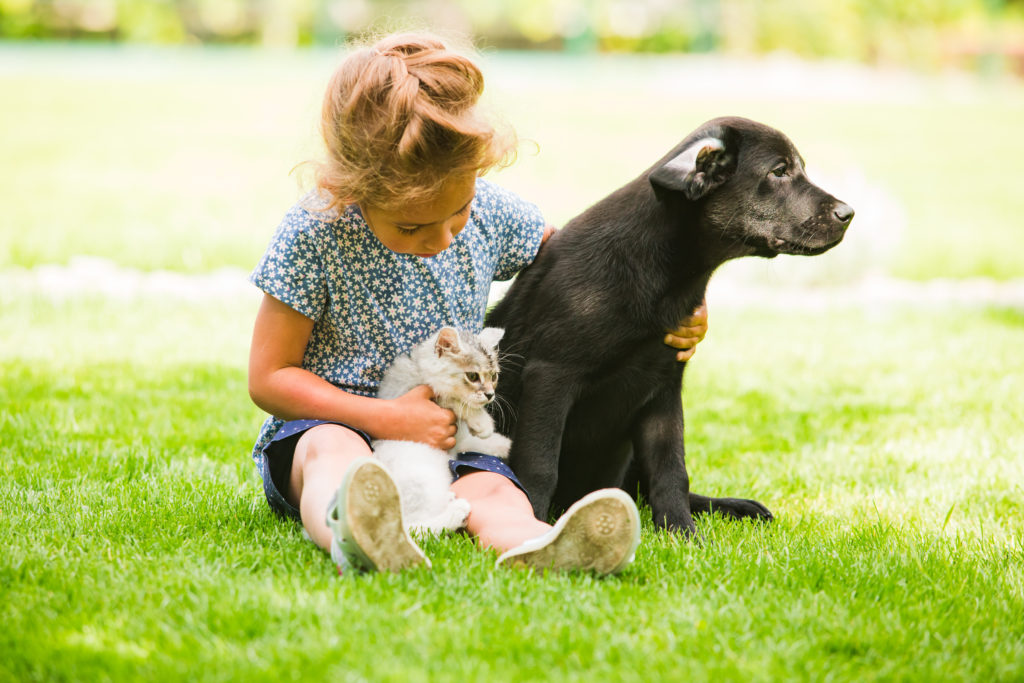
Maintaining a pet-friendly lawn requires some regular upkeep, but it’s definitely worth the effort. One of the most important tasks is cleaning up after your pet. Make it a priority to promptly remove any pet waste to keep your lawn clean and free from unpleasant odors. This will also prevent staining and discoloration of the turf. Additionally, giving the area a regular rinse with water will help maintain its cleanliness and freshness.
Another aspect to consider is discouraging your pets from digging in the turf. You can achieve this through positive reinforcement and training techniques. Redirect their digging behaviors to designated areas like a sandbox or a specific spot in the yard where they can freely indulge in their natural instincts. This way, you can preserve the integrity of the turf while still allowing your pets to satisfy their digging urges.
Lastly, don’t forget to regularly pick up your pets’ toys from the turf. Leaving toys scattered on the lawn can negatively impact both the aesthetics and overall health of the turf. By keeping the lawn clear of toys, you ensure proper maintenance and prolong the longevity of your pet-friendly turf. It’s all about creating a clean, beautiful, and enjoyable space for both you and your furry companions to relish.
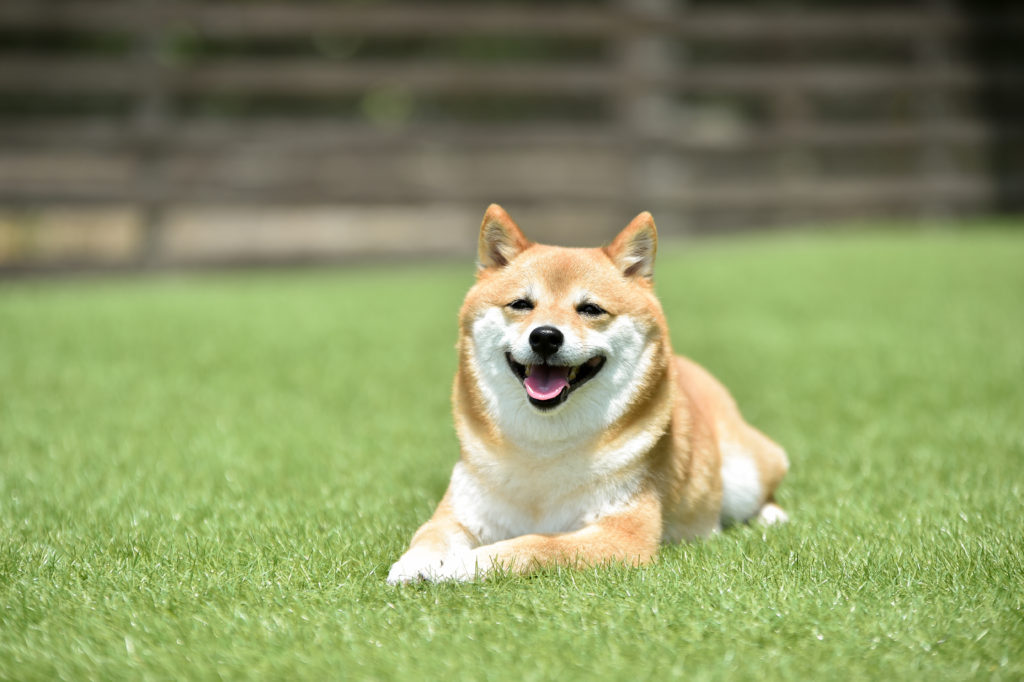
Get Your Best Lawn
In conclusion, for pet owners seeking a durable and low-maintenance lawn, turf from trusted providers like Lavington Turf Farms can be an excellent solution. By following the tips for pet lawn maintenance and effective yard maintenance techniques, you can create a beautiful and pet-friendly yard that brings joy to both you and your furry companions. With proper installation and regular care, your pet-friendly lawn will thrive, providing a lush and enjoyable outdoor space for everyone to enjoy. Contact us at Lavington Turf Farms today for a quote or to speak with one of our knowledgeable team members. Let’s create a lawn that both you and your beloved pets will love!
Learn more about turf with our other blogs:
- Top Tips For Sod Installation
- Time To Start Laying Some Turf!
- The Benefits Of Real Grass
- 4 Key Tips To Preparing Your Yard For New Sod
Sod or Seed? What’s Better For Your Project?
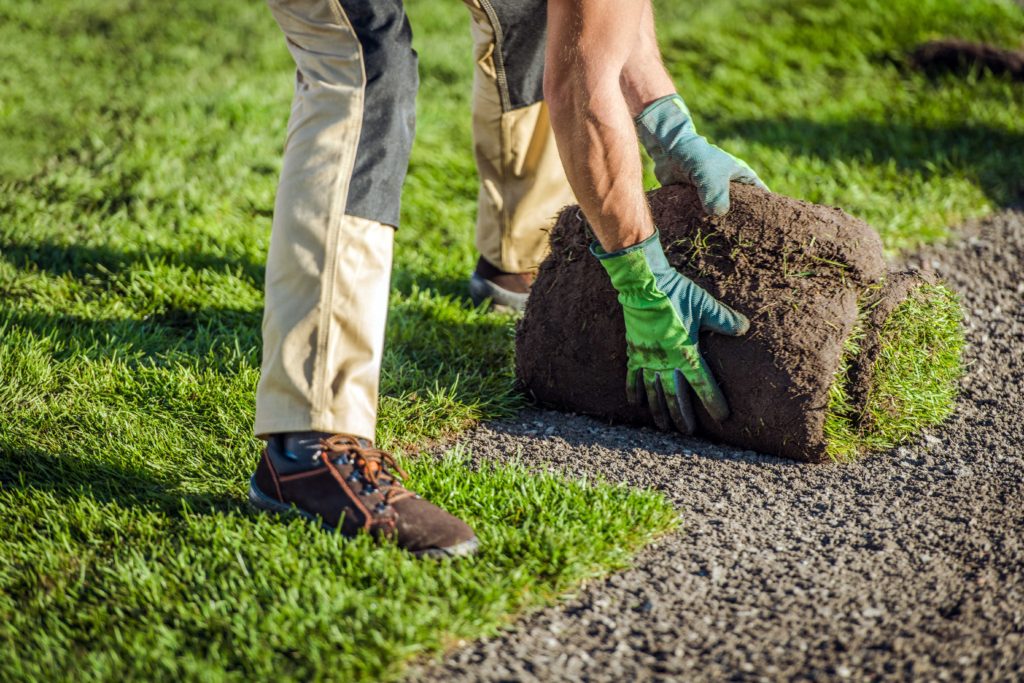
When it comes to installing a new lawn or replacing an old one, you may wonder whether to install sod or plant seed. While both choices have their own set of pros and cons, sod is frequently the preferable option for many. Below, we will discuss the benefits of using sod, particularly from an Okanagan turf farm, and compare it to seed for different lawn installation or replacement projects. Let’s take a look at the differences between sod and grass seed to help you determine which will work best for your space.
Comparison Of Sod And Seed For Different Projects
Before making your choice between sod and seed, consider the nature and scope of the project. If you want an instant lawn, then sod will be your best decision because it can be installed immediately and at most times of the year. Seed may be a better option if you are willing to wait 2 to 3 months for it to fully establish. Sod can withstand heavy use so it is an excellent choice for high-traffic areas. On the other hand, seed may be more practical if you only need to cover a small area or want to create a custom blend of grass varieties.
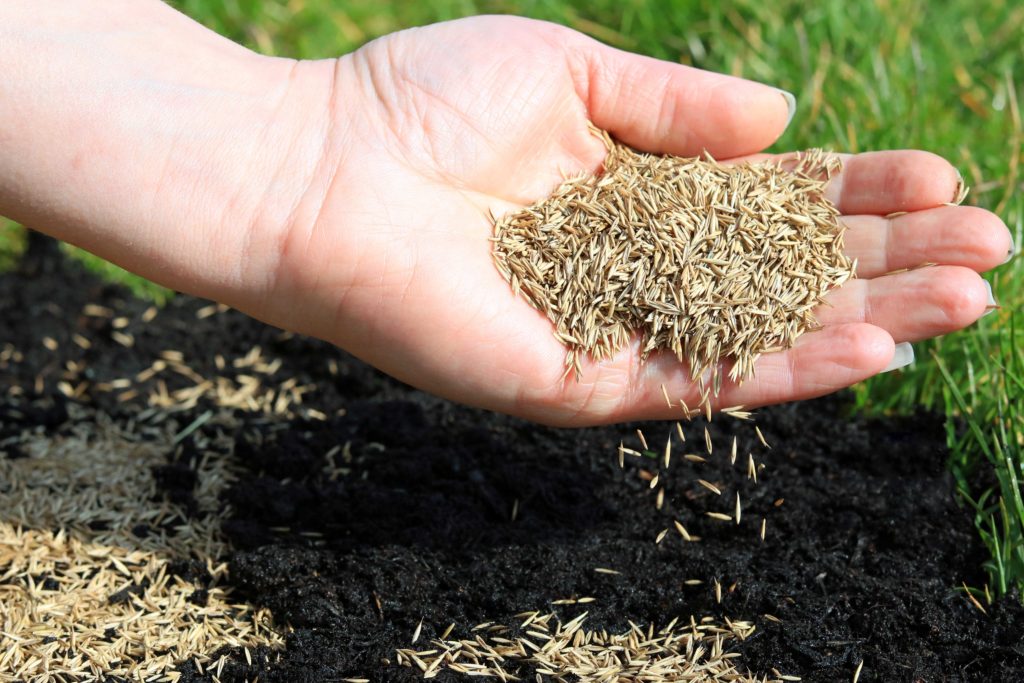
Cost, Maintenance, And Time Frame Differences
While sod may be the more expensive option upfront, it’s a smart investment in the long run because it requires less upkeep. Seed, on the other hand, needs frequent watering and attention, which can add up in terms of both time and money. By choosing sod, you’ll save on lawn maintenance equipment and enjoy a beautiful, fully-grown lawn right away, whereas seed can take a significant amount of time to grow. Overall, sod provides a low-maintenance and aesthetically pleasing solution that you can enjoy right away.
Environmental Factors To Consider
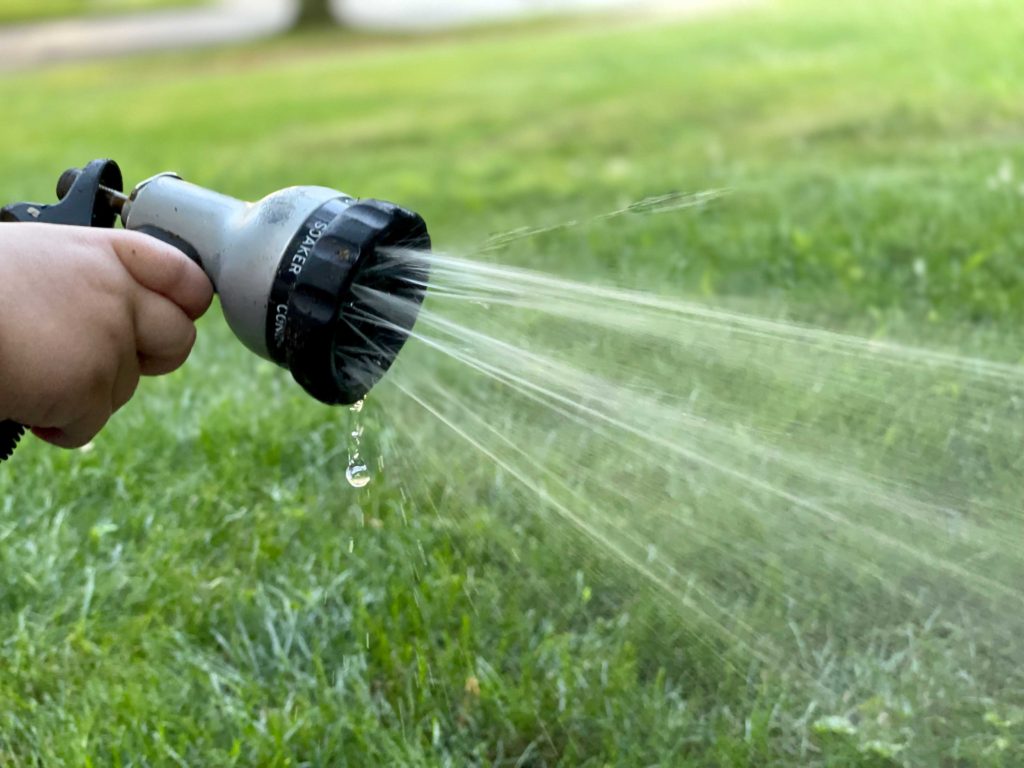
Choosing the correct variety of grass for your lawn is crucial and should depend on the climate and soil type of your region. Opting for top-quality sod from a local turf farm (such as sod in Kelowna, sod Penticton, or sod vernon ) can be an excellent choice because it is cultivated specifically for the local climate and soil. This local sod, is drought-tolerant and can endure prolonged dry spells with minimal need for watering or upkeep. It consists of grass species with robust, deep root systems that can tap into nutrients and water deep below the surface. This, in turn, can provide immediate erosion control and soil stabilization.
Preparation And Installation Tips
Proper preparation of the soil is the first step to a successful lawn. Start by clearing out any grass, weeds, or other debris from the area. After that, apply and spread an adequate amount of high-quality organic topsoil, resulting in a depth of 3 – 3.5 inches. Once you’ve done that, make sure to level the soil and install any irrigation lines before laying down the sod. Our final key tip is ensuring you have the correct amount of sod for your project scope. This means calculating the sod required by measuring the length and width of the area in feet.
Common Mistakes To Avoid
One of the biggest mistakes people make when installing sod is not properly preparing the soil. As we stated above, it’s important to remove all existing grass and weeds before laying down the sod, or else you might encounter issues with weed growth and poor grass health. Additionally, proper watering is essential to help the roots establish and avoid drying out. Finally, try to avoid installing sod during extreme weather conditions, such as very hot or very rainy weather. Doing so can have negative impacts on the growth and overall health of your sod. We have a great blog on thet best time of the year to lay your sod here.
Get Your Best Lawn
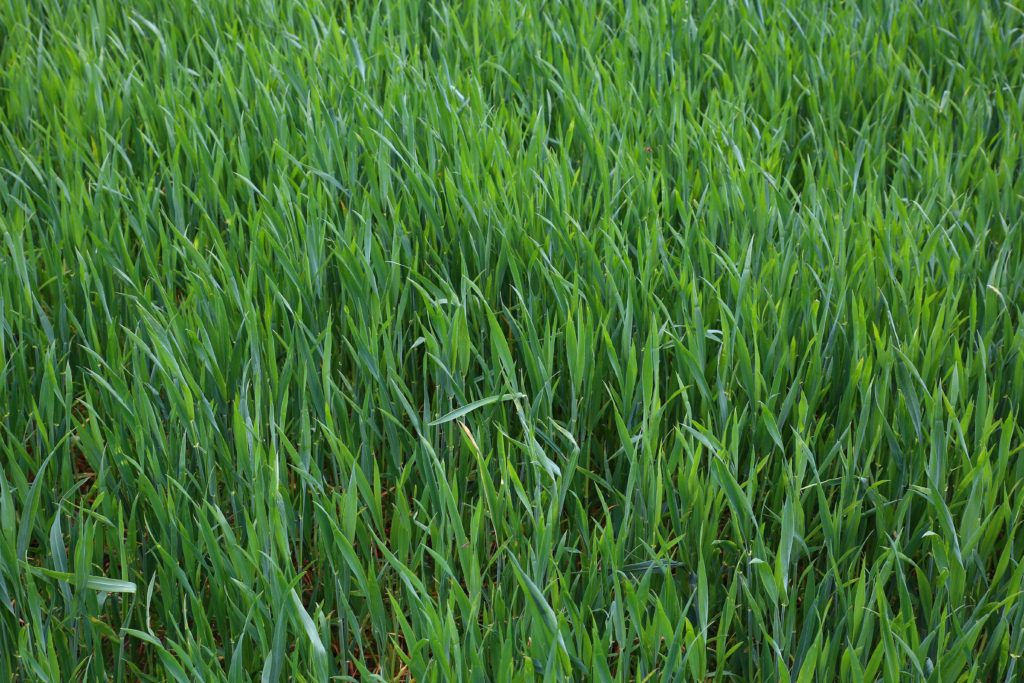
To sum it up, if you’re looking for a hassle-free and instantly beautiful lawn, sod from an Okanagan turf farm, such as Lavington Turf Farm, is definitely worth considering. Although seed might seem like a cheaper alternative, sod offers a range of advantages. But, it’s important to do your research and pick the right type of grass for your region, and to prepare your soil properly before laying down the sod. If you need help with making a decision between seed or sod, don’t hesitate to contact us for more information.
Learn more about turf with our other blogs:
- Top Tips For Sod Installation
- Time To Start Laying Some Turf!
- The Benefits Of Real Grass
- 4 Key Tips To Preparing Your Yard For New Sod
Real Vs. Artificial Turf

Whether you’re planning to install a new lawn or revamp an existing one, the question of whether to use real grass turf or artificial turf is bound to come up. Both options have their pros and cons, making it difficult for homeowners and lawn maintenance professionals alike to decide which one suits their needs best. While natural grass has been the go-to choice for centuries, synthetic turf has gained popularity in recent years. In this blog post, we’ll explore the differences between real turf grass and artificial turf, weigh their advantages and disadvantages, and help you make an informed decision about which one is right for your project.
Pros and Cons of Real Turf
Real turfed grass is a popular choice for many homeowners because of its many benefits, one being its natural appearance. Home marketing companies have statistically proven that well-maintained turfed and landscaped yards sell quicker and obtain higher sales than those that don’t.
But that’s not all! Turf is an excellent air filter, removing dust and dirt from the atmosphere. Plus, a 2,500 sq ft lawn releases enough oxygen for a family of four to breathe for a whole day! Turf also helps filter pollutants from runoff, controls erosion, and reduce traffic noise.
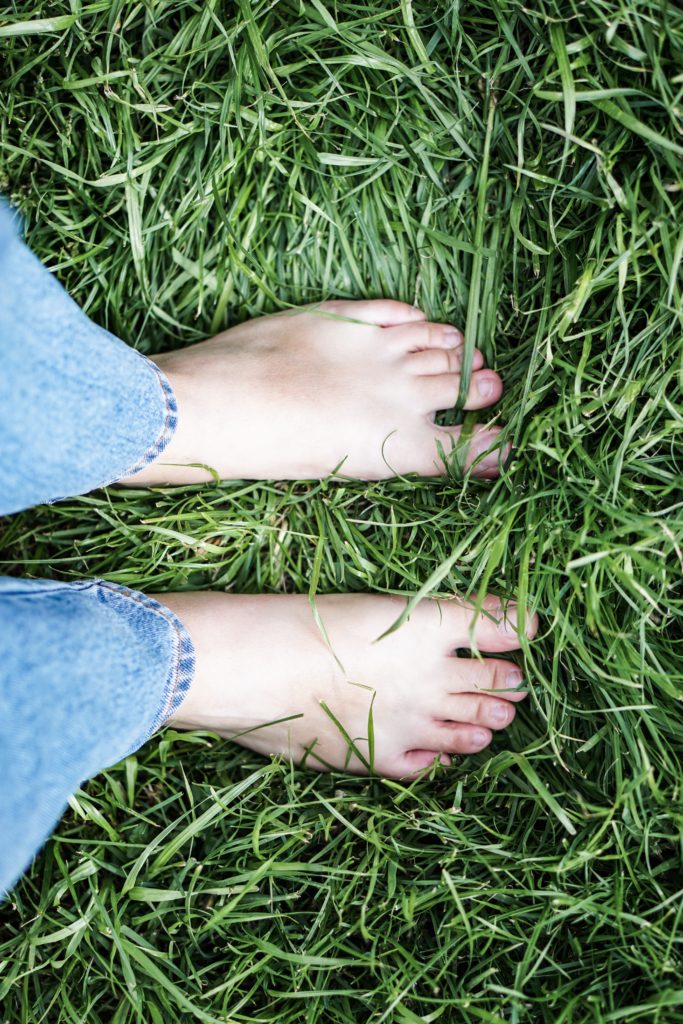
Real turf has few drawbacks. It requires maintenance as it needs regular mowing, watering, and fertilizing to keep it healthy and looking good. Real turf is susceptible to weather conditions such as extreme heat or cold temperatures which can cause damage or even kill the grass if not taken care of properly. Keeping on a timely maintenance schedule can help with these issues. Another tip to help; If you’re located in Kelowna, Kamloops, or Vernon, you can consider getting your turf from a Kelowna turf farm, Turf farms Kamloops/Vernon, or here at Lavington Turf Farm. Turfed grass from a local farm is likely to be adapted to the local climate and may require less maintenance than grass that has been shipped from other regions. Additionally, landscaping experts from these areas can offer you guidance on how to properly maintain your lawn in the region’s climate.
Pros and Cons of Artificial Turf

Artificial turf has gained popularity as an alternative to natural grass due to its low maintenance requirements. It doesn’t need watering, mowing, or fertilizing like real grass does. This can save both time and money for homeowners and businesses alike. However, one major drawback of artificial turf is that it doesn’t react well to heat. The synthetic material absorbs the sun’s rays and can become dangerously hot, making it uncomfortable for people and pets to walk on during the summer months. Speaking of pets, Cleaning your pet’s urine or feces can become a challenging task, often getting stuck to the material, creating a breeding ground for bacteria that may pose a risk for your children or grandchildren to play on. Contrary to popular belief, artificial turf requires some maintenance, and it is not entirely weed-free. Many people believe that synthetic grass eliminates the need to deal with weeds, but that is a misconception. Weeds can still grow through the turf’s cracks and seams and around the edges if given the opportunity. Another concern with artificial turf is that it is non-biodegradable, meaning that once it reaches the end of its lifespan (usually around 10-15 years), it will sit in landfills indefinitely instead of decomposing like natural materials would.
Which Option is Best for You?
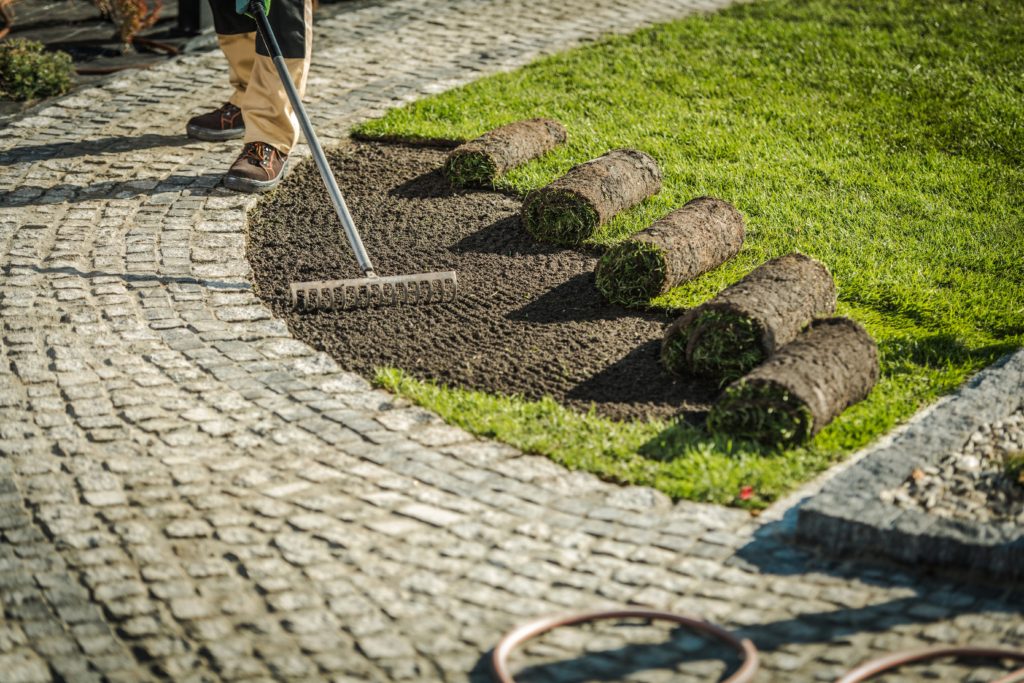
When it comes to choosing between real turf and artificial turf for your lawn, there is no one-size-fits-all answer. It ultimately depends on your personal preferences and needs. However, if you prioritize a natural look and environmentally friendly option, then real turf is the way to go. Not only does it provide numerous benefits such as air purification and water filtration but it also adds value to your property in the long run. So why not get started with real turf today and enjoy all that a beautiful green lawn has to offer?
If you’re interested in real turf, or have questions, you can contact us directly over the phone at (1-250-549-2967) or you can fill out our contact form on our website here, and our staff can help assist you with all your needs. We provide availability for pick up or delivery that services the Okanagan (including Vernon, Kelowna, Penticton, Osoyoos, Sorrento, Salmon Arm), Thompson Okanagan (Kamloops) BC Interior, and all the way to the US border. You can learn more about us here too.
Learn more about turf with our other blogs:
- Top Tips For Sod Installation
- Time To Start Laying Some Turf!
- Invest in your landscaping this spring with sod
Invest in Your Landscaping This Spring With Sod
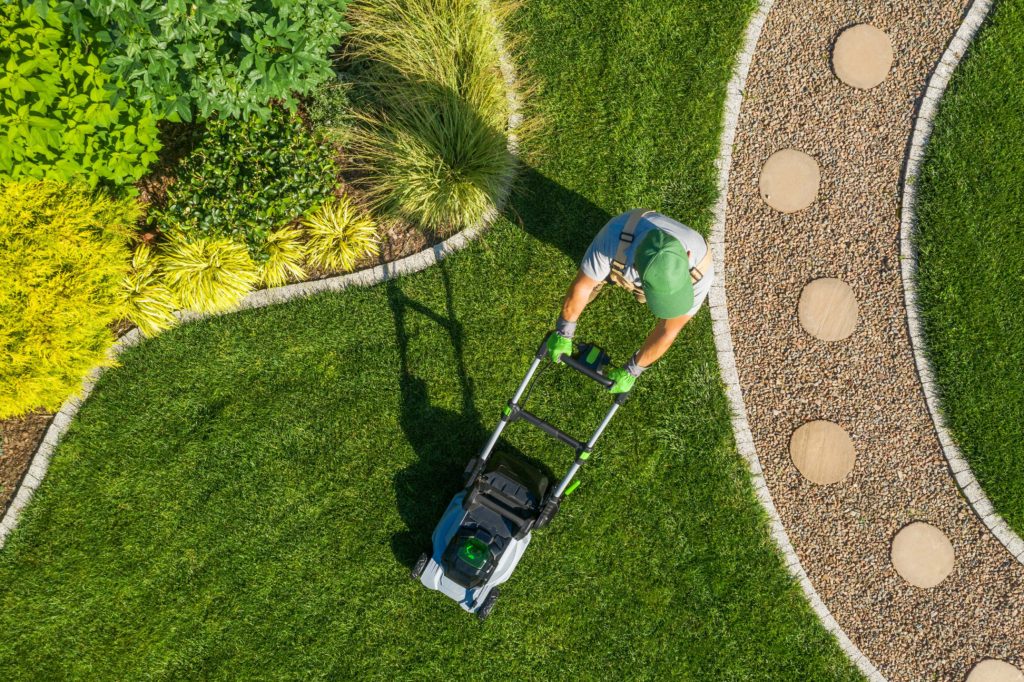
The sense of pride you feel towards your home extends beyond its walls and encompasses your lawn, which serves as a reflection of your hard work and dedication to one of your largest investments. Regardless of whether you have inherited an underwhelming lawn or are beginning with a blank slate after removing the previous one, there is no better opportunity to take control and bring your lawn up to par. Investing in sod grass for your landscaping projects this spring can be a great way to enhance the overall appearance and value of your property.
Why Choose Sod?
One significant advantage of sod is its ability to prevent soil erosion, as the dense root system keeps the soil in place during heavy rainfall. Additionally, sod can increase property value by providing an attractive, well-maintained lawn that improves curb appeal. Sod is great for the environment too, it reduces runoff by absorbing and filtering rainwater.
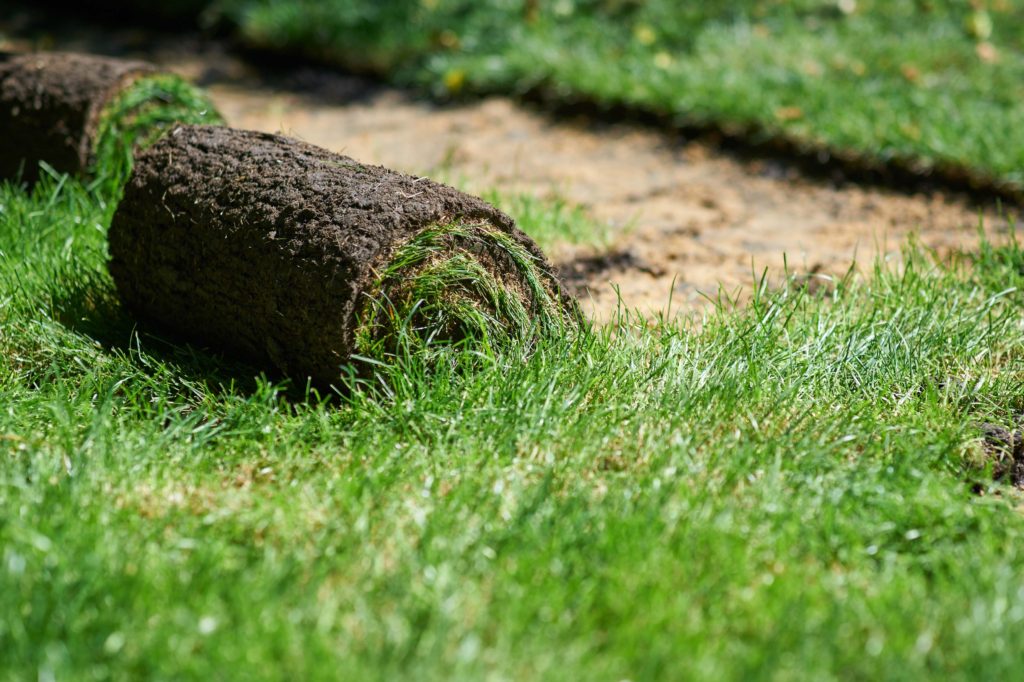
The dense root system reduces the amount of surface water that runs off into nearby storm drains, streams, or rivers. The water that does get through is filtered through the sod’s tight roots, trapping pollutants and preventing them from entering the water supply. Sod contributes to air quality by absorbing carbon dioxide and releasing oxygen, creating a healthier atmosphere. Lastly, a well-maintained yard with sod creates a space for outdoor activities and relaxation, contributing to a healthier lifestyle.
Considerations When Choosing The Right Sod
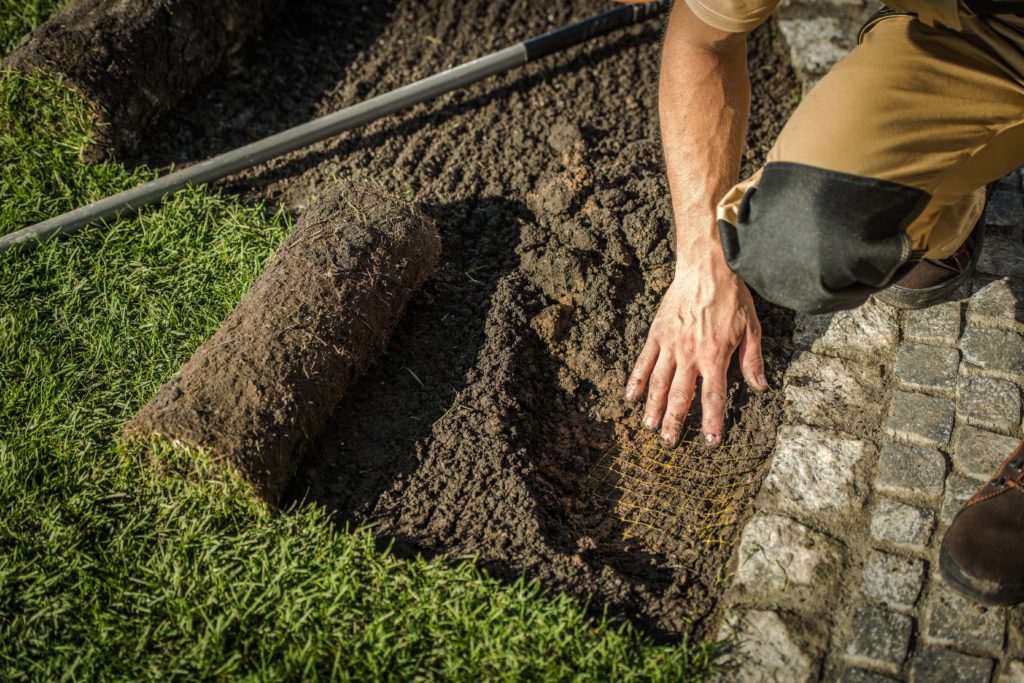
When looking for sod we have to consider the climate. As we know, in the Okanagan area ( Kelowna, Vernon, Kamloops ), we receive plenty of sun exposure and dry air, so we must consider choosing a sod variety that can thrive in our region with little shade. We have the perfect solution at Lavington turf farms called the #1 Kentucky Bluegrasses blended with Fescue that is the right blend for our arid dry summers yet hardy enough to withstand cold winters.
Finally, turf sod needs good soil to grow properly, so it’s important to choose a variety that is compatible with your soil type. It is also essential to properly prepare the soil before laying the sod, by removing any debris and adding any irrigation you may want. With proper care, your sod can create a lush and beautiful lawn.
Installing & Maintaining Sod
Proper installation and lawn maintenance of sod are essential for its longevity and aesthetic appeal. Site preparation involves clearing the area of grass, weeds, and debris and amending the soil as needed. Watering thoroughly and frequently for the first few weeks is crucial for root development. Regular fertilization, following the recommended schedule for your sod variety, keeps your lawn healthy and green. Begin mowing when turf roots are difficult to separate from the soil, mowing high the first time bringing it down to the desired height gradually. Following these lawn maintenance guidelines allows you to enjoy a beautiful and lush lawn for many years.
Get The Best Yard Possible!
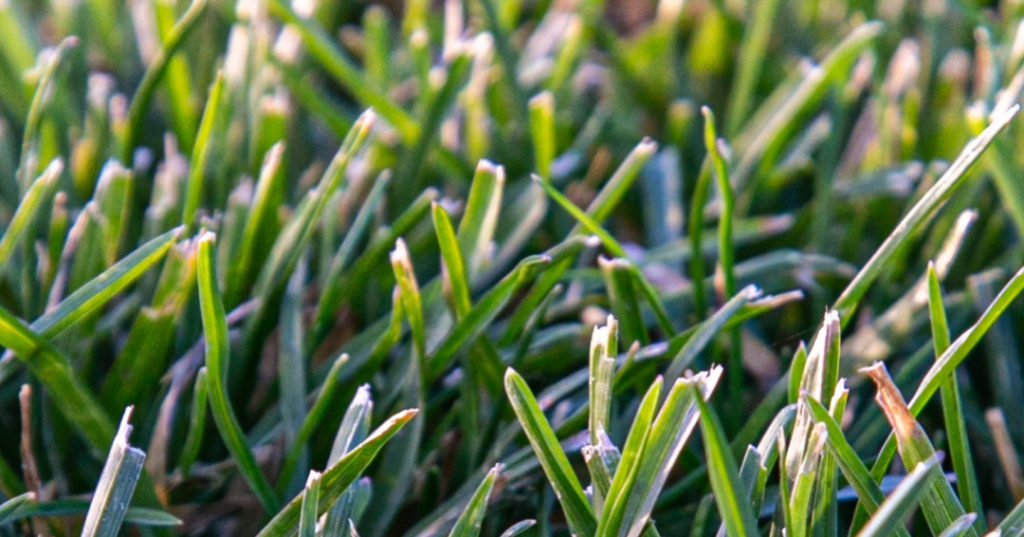
Consider sod grass for your lawn this spring to enhance your property’s landscaping and enjoy benefits such as preventing soil erosion and increasing property value. At Lavington Turf Farms, we provide top-quality sod and turf to meet all your landscaping needs.
We serve Vernon, Coldstream, Lumby, Salmon Arm, Sorrento, Revelstoke, Kamloops, Kelowna, Penticton, Kootenays, and Caribou with fast delivery and pick-up options at our sod farm. Elevate your property’s landscaping with our top-notch sod from our sod farm today. To receive further information or request a no-obligation quote, please visit this page on our website.
Contact us directly by phone at (1-250-549-2967) with any questions about our soil and your lawn care needs or fill out our contact form on our website. You can learn more about us here too.
Learn more about our sod with our other blogs:
Why You Need Organic Soil
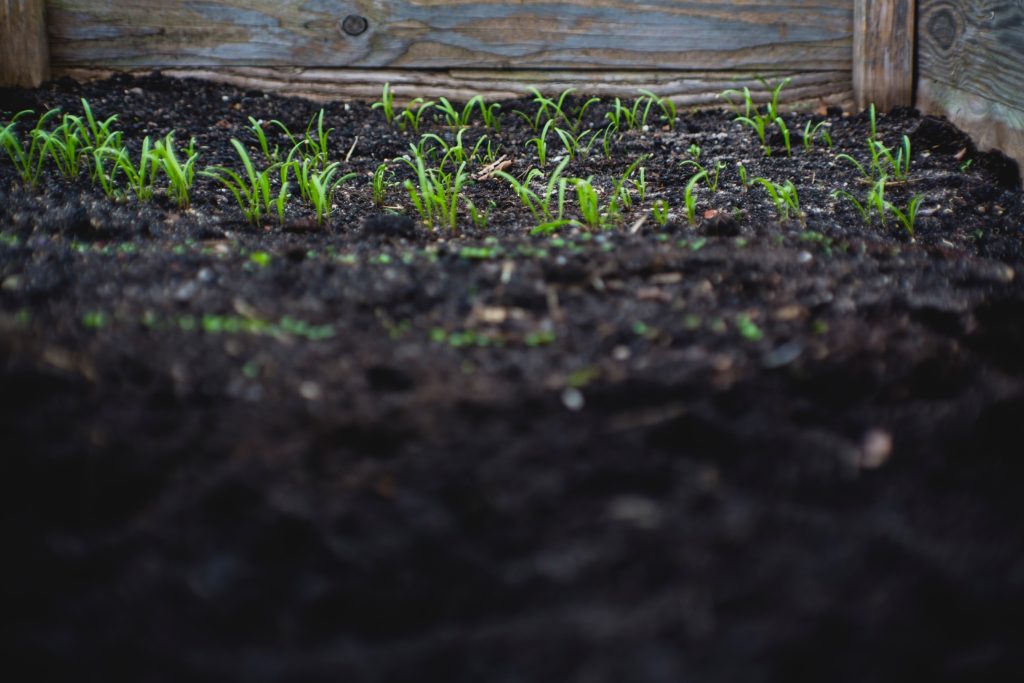
Have you dreamt of having a beautiful and thriving yard or garden? Can you picture having plush green grass and flourishing flowers? Well, this all starts from the ground up! Using organic soil sets your outdoor space up for success. Proper ground preparation with organic topsoil will make all the difference in your landscaping projects.
What’s Organic Soil?
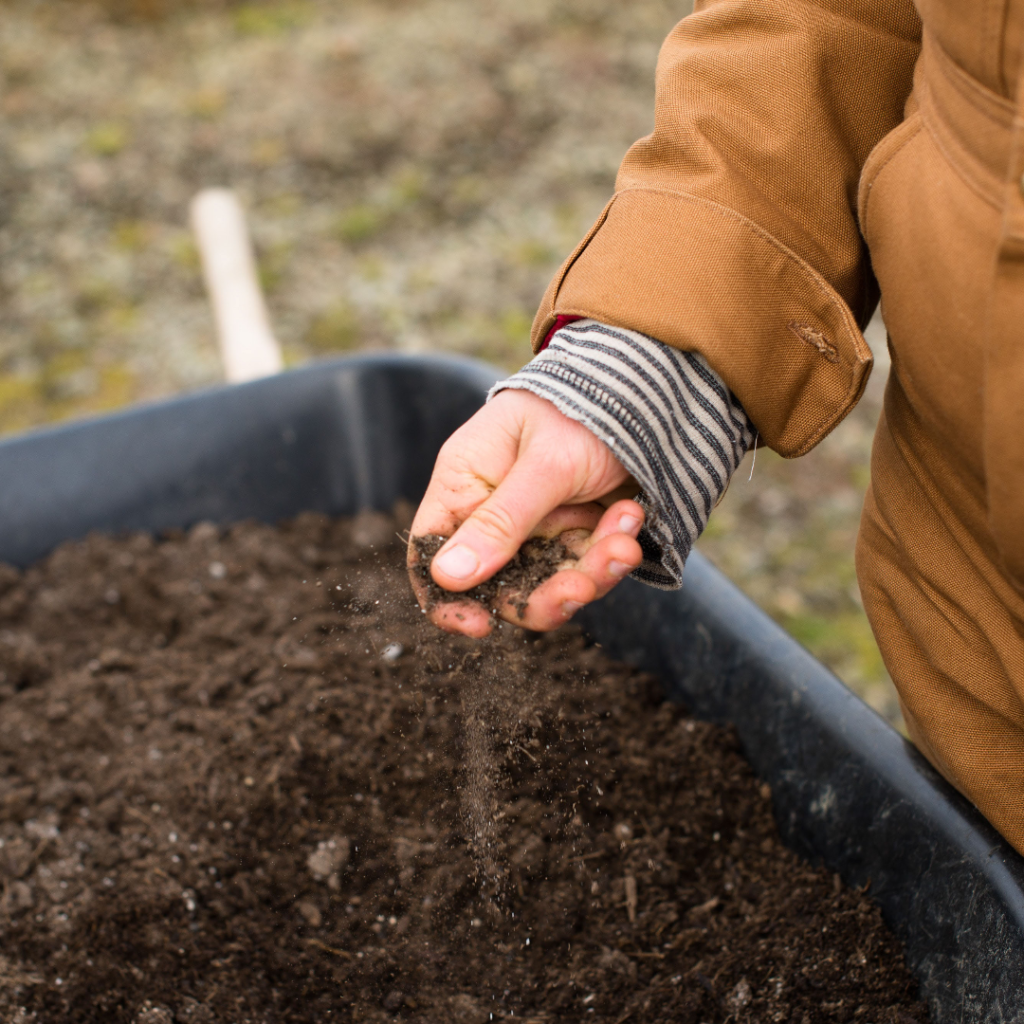
Organic soil is made up of organic matter and living organisms and is commonly known as living soil. This type of soil is composed of weathered rock, water, air, and other plant matter. There are many benefits to choosing organic soil when completing your lawn maintenance project versus the non-organic options.
What Are The Benefits Of Organic Soil?
Added Nutrients
The organic matter that is found in this type of soil can serve as a reservoir for nutrients and minerals. Using organic solutions allows for an increase in nutrient supply and the release of nitrogen, phosphorus pentoxides, and sulphurs. The organisms that live in the soil and the plants that grow in the soil need these nutrients to be able to grow.
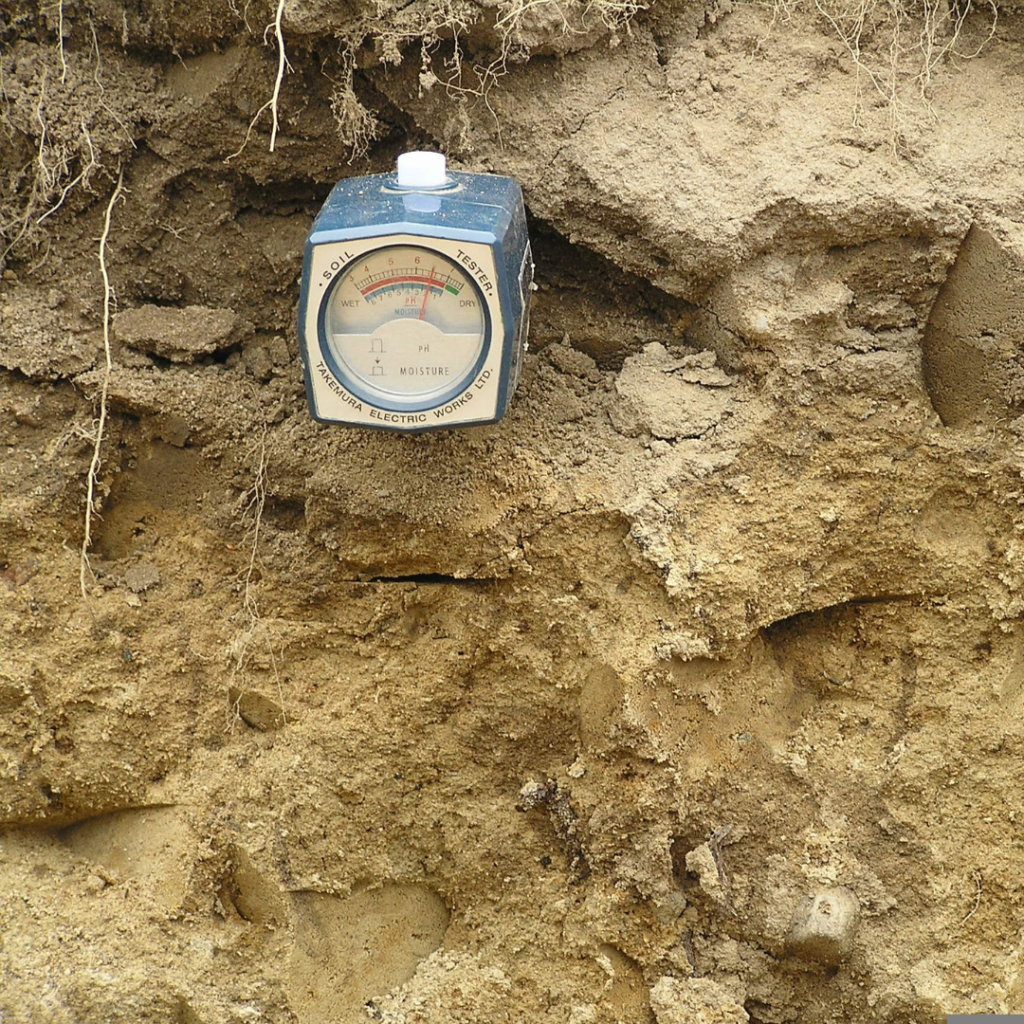
Balancing It Out
It’s always important to test your soil’s pH level since having the correct PH level determines the availability of essential plant nutrients. This is important for healthy plant growth. If the soil is too acidic it can hinder a plant’s roots from accessing the much-needed nutrients. The PH level can be the most telling factor if the soil will help to produce strong and healthy plants and grass. With organic soil, you will be using soil that has been tested to ensure that it has the average pH level recommended to allow plants to absorb its nutrients.
Protecting Measures
Organic soil, due to its living matter, can reduce the impact of pesticides. Organic matter in the soil can help prevent pesticide toxins from leaching into the groundwater and becoming harmful to plants, animals and insects. This is accomplished because the organic particles in organic soils have the ability to hold water, dilute the pesticides, and provide binding qualities to the toxins to minimize their effects.
Keep It Aerated
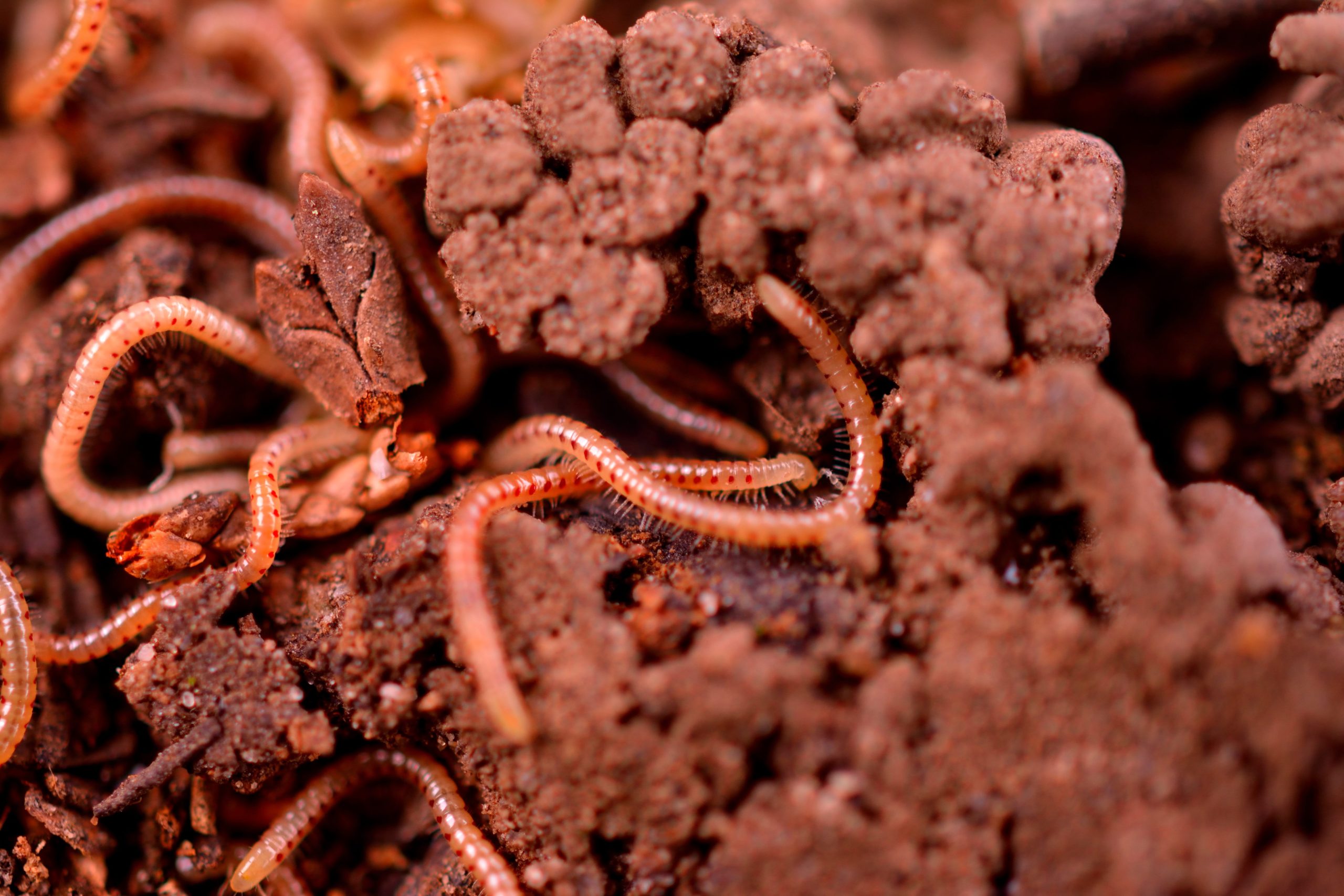
Aerated soil allows for all living creatures beneath the soil to “breathe” which is an important source of nitrogen for plants. Living creatures such as fungi, earthworms, and insects benefit from this oxygen. Organic matter can make the soil more breathable and provide an absorbent layer that will prevent dry and sand-like soil. It is highly recommended that soil be tilled frequently during drier conditions to allow nutrients to be revitalized.
Retaining Water
Did you know that healthy soil contains 25% water? By using organic solutions, you can create a sponge-like atmosphere that provides a healthy balance of organic particles. This type of soil can help to retain moisture for use during times of drought.
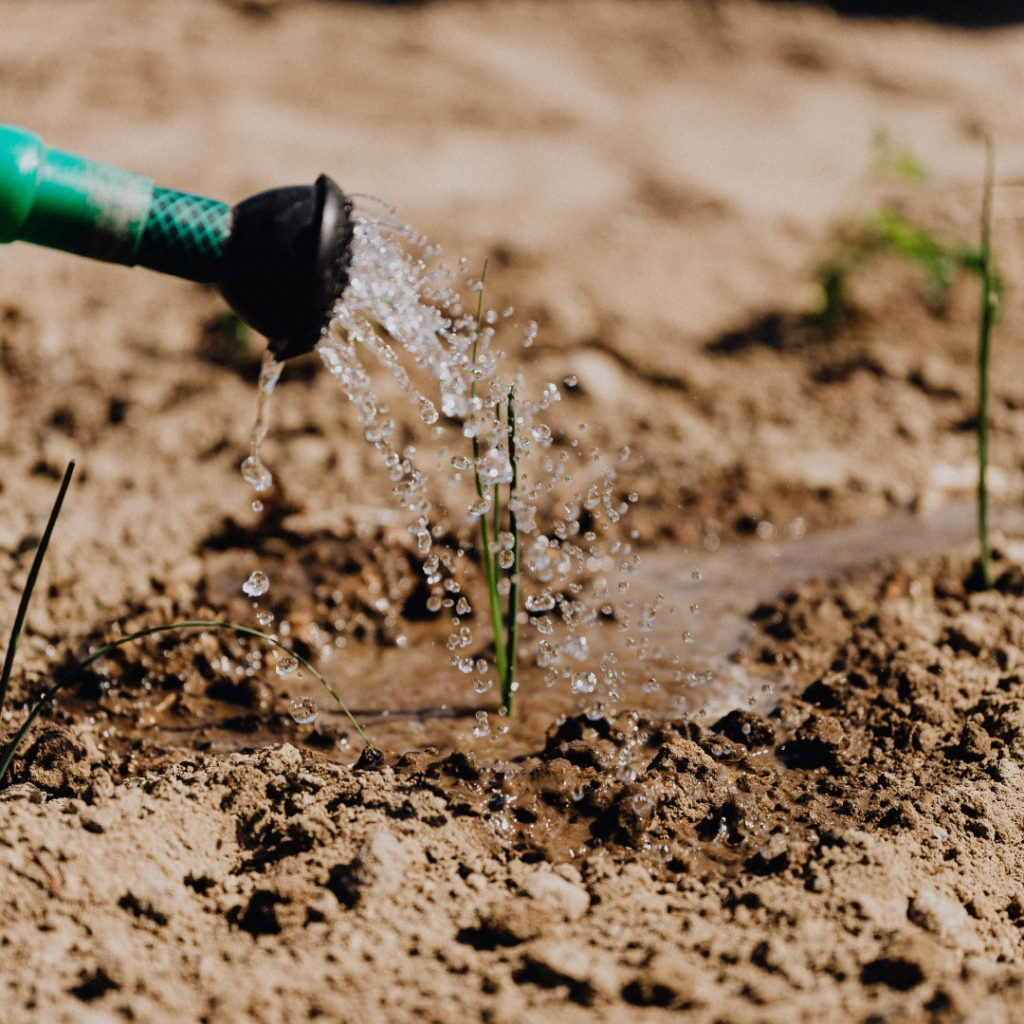
More Environmentally Friendly
It can be argued that one of the most significant benefits of organic topsoil is the fact that it is an eco-friendly option. Unlike other soil, this non-synthetic option is chemical-free. This all-natural soil will help revitalize your gardens and yards without harming the environment.
Get The Best Yard Possible!
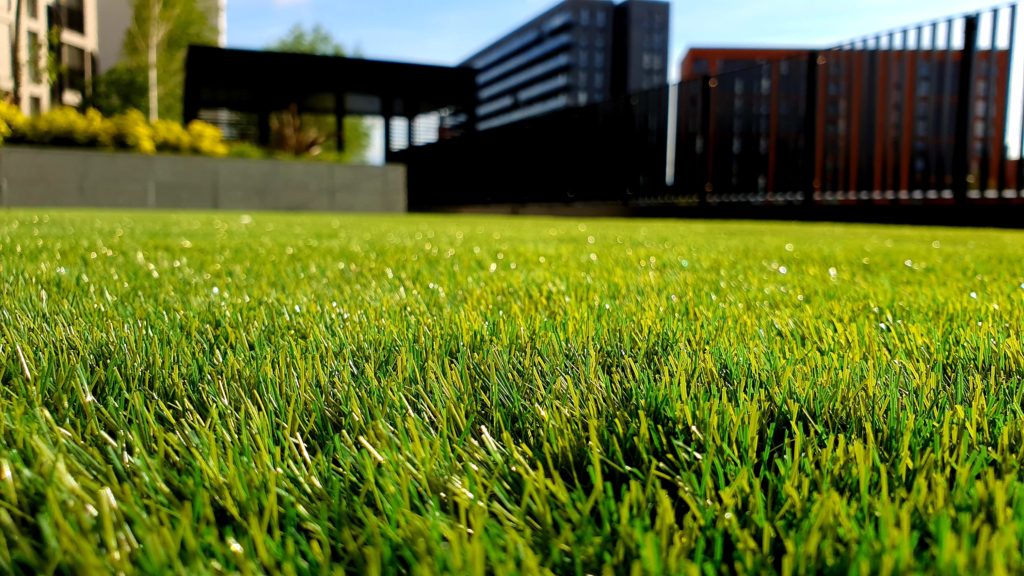
Give your yard a chance to flourish with the use of organic soil. By using organic matter-filled soil, you will dramatically improve your soil quality and overall plant and grass health. Putting a layer of organic topsoil can give your yard and garden a new life for years to come.
At Lavington Turf Farms, we provide only the highest quality local, organic soil to allow you to have a healthy and environmentally friendly yard. We also provide sod and turf services for those looking to give a whole new life to their yard. We provide pick up at our farm or delivery that services Okanagan (including Vernon, Kelowna, Penticton, Osoyoos, Sorrento, Salmon Arm), Thompson Okanagan (Kamloops), BC Interior, and to the US border.
Contact us directly by phone at (1-250-549-2967) with any questions about our soil and your lawn care needs or fill out our contact form on our website. You can learn more about us here too.
Learn more about laying turf with our other blogs:
How To Install Your Own Turf This Fall
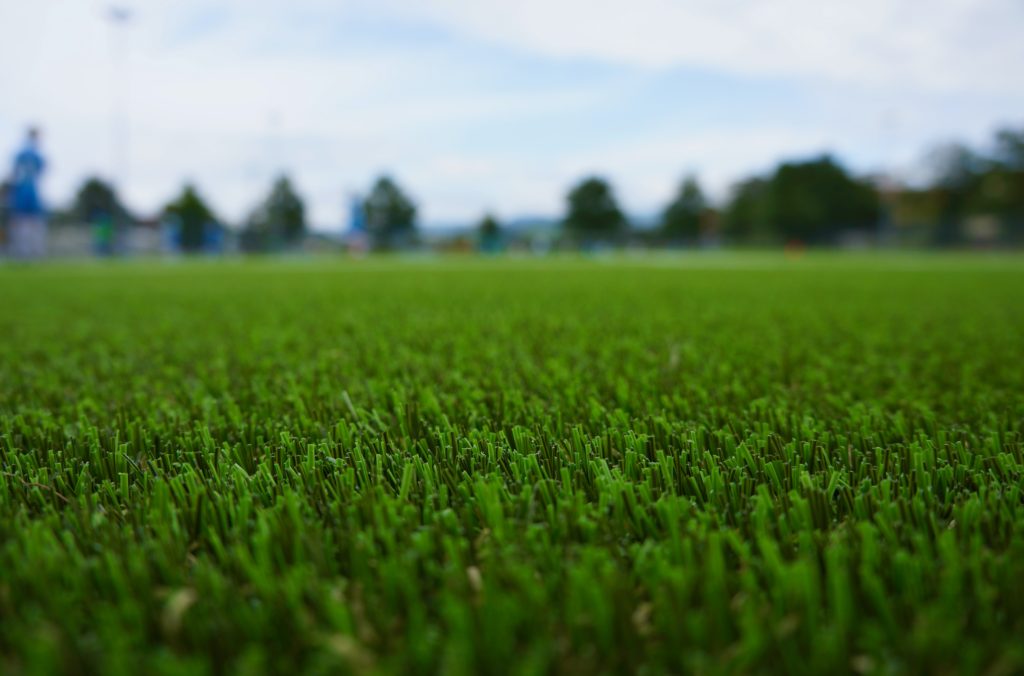
Have you noticed that your lawn is looking a little brown or patchy? There is no better time than this fall to transform your lawn into a beautiful green yard. It’s time to be the envy of your neighbourhood! Read on to learn how you can landscape your yard with our top-quality turf.
What Steps Should You Take With Your Turf Grass?
Proper installation can make all the difference when it comes to your lawn which is why these steps will assist with the success of your turf grass. We want to share our tips for installing turf:
Remove Existing Grass
It is important to remove all existing grass from the area where you are planning on laying turf. Using a sod cutter or hoe will make it easier to remove old lawns. It is recommended that you water the lawn before doing this or do it after heavy rain.
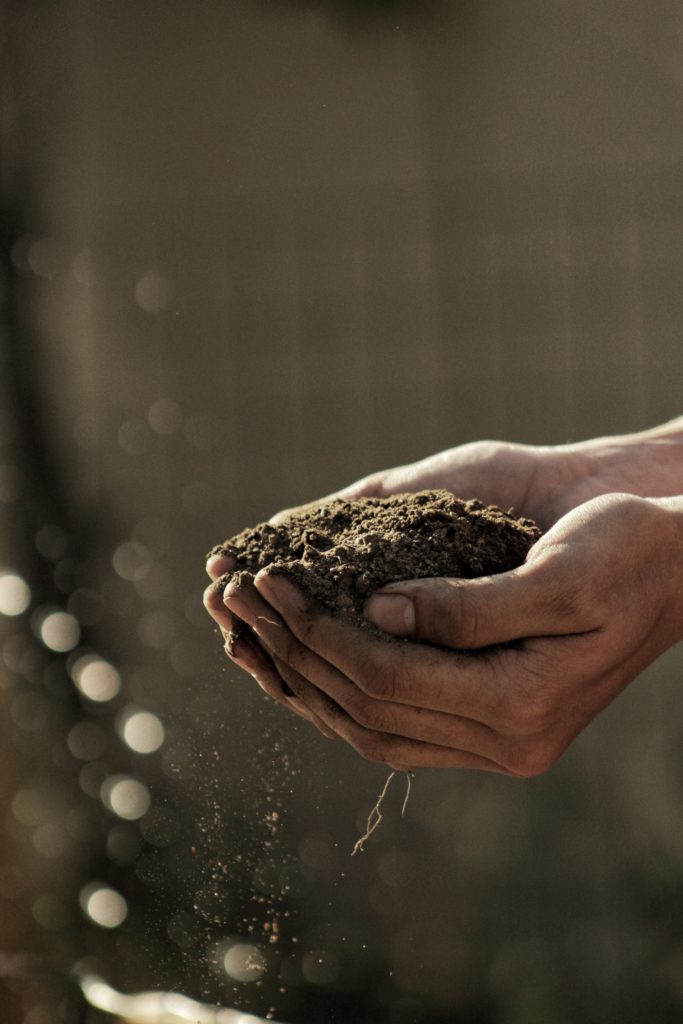
Test The Soil
Testing your soil prior to laying turf is important because it will tell you what your soil’s pH levels are and if your lawn is deficient in any nutrients. This will allow you to see what you should add to your soil and determine the type of fertilizer you will need. Don’t take a wild guess on what your lawn needs, healthy soil means healthy grass.
Level It Out
Raking your lawn and making sure that it is levelled can make it easy for your turf to grow and be laid easier. You may find that you require some new organic topsoil to help with the success of the new turf.
Fertilize
Fertilizing can help to supplement the nutrients in the soil and restore its balance. After testing your soil, you will have a more accurate idea of what type of fertilizer you need to have a healthy and thriving lawn. Fertilizer can also be a proactive solution to weed control and help to ensure a thick and robust lawn.
Laying It Down
When unrolling turf, it is recommended that you start with the furthest edge of your yard. This will help eliminate the need to walk over the newly installed turf. After you unroll the turf, make sure you gently press the turf into the ground with your hand. Keep your turf close together to avoid it looking patchy. Continue this process until your yard is completely covered in the new grass.
H20
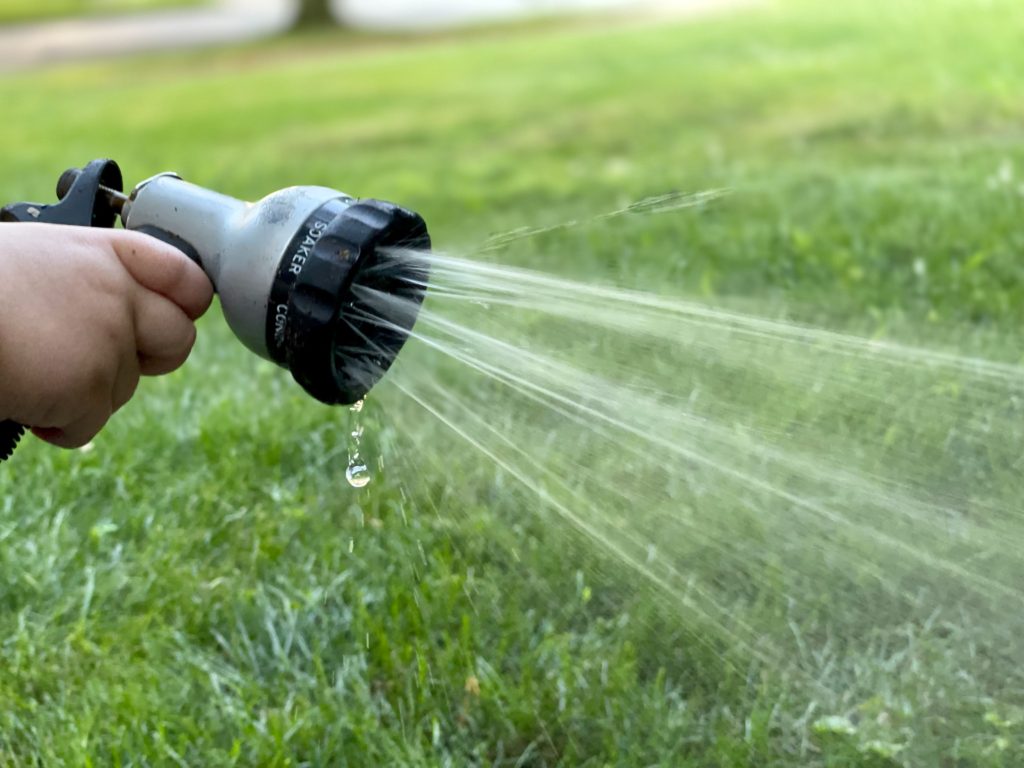
Proper hydration of the turf is crucial! New turf requires watering twice a day for the first week after installation and don’t forget to fully saturate the turf. For the following three weeks, you should be watering two to three times a week, after that, you likely will only need to water once a week.
Remember that this may vary based on your location and our team will be able to help you to come up with a watering schedule. Especially in fall, it is recommended to water before noon to allow it enough time to soak up the water before the evening now that it cooling off more.
Watch Your Step
It is crucial that once the turf is installed that you avoid walking on it for 2-3 weeks to allow it to grow. Depending on the location, this can be difficult to do which is why it is important to avoid outdoor events during this time. Putting up a don’t walk on the turfed grass sign may come in handy for those unaware of the new lawn.
Continuous Care
Now that you have installed your beautiful new turf grass, proper maintenance is key to success to keep your grass looking nice and green. It is recommended that you wait until the new turf has grown to about 2-3 inches long before you mow the new turf. If it doesn’t appear to be growing enough to mow after three weeks, let us know and we can guide you through what to do now. Make sure that you also wait until your lawn is ready to mow before raking it because if the turf hasn’t started to grow roots into the soil, you will end up lifting the turf.

Ensuring The Success Of Your New Turf
Timing should be a key consideration when deciding when you should install your turf. If you are planning on going away on holiday, hosting an event, or cannot care for the lawn, you’ll want to reconsider when you lay the turf. There are many benefits to properly installed turf.
Get Your Brand New Lawn
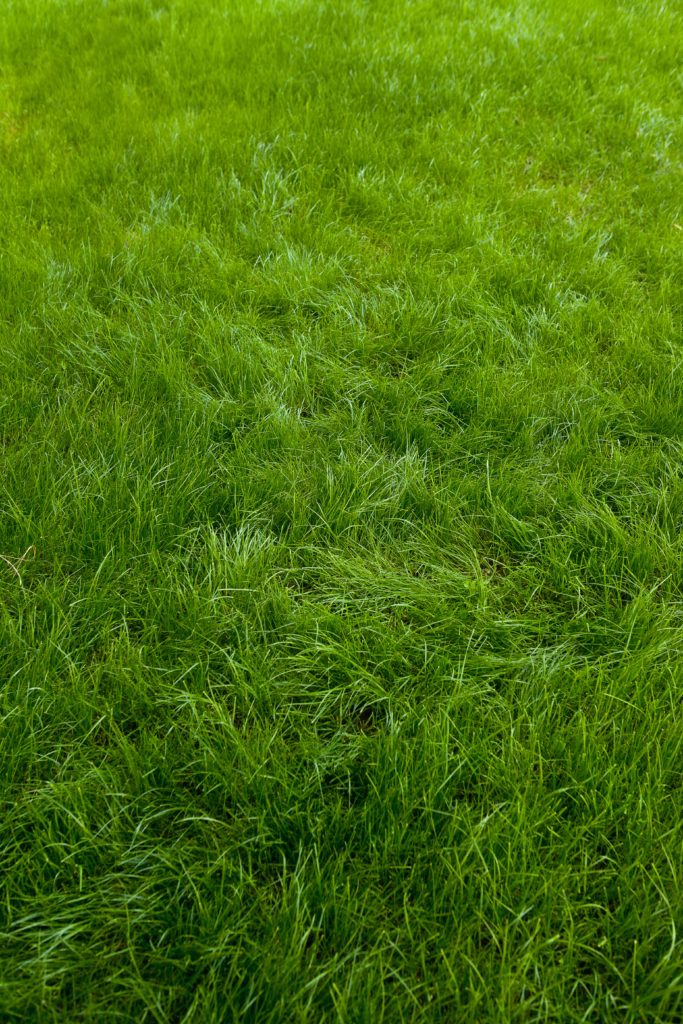
This fall is your perfect opportunity to take your landscaping to the next level with new turf. At Lavington Turf Farms, we carefully choose seeds and suppliers that provide only the highest quality of turf. Let our team help you to choose the best turf options for you. We provide pick up at our farm or delivery that services Okanagan (including Vernon, Kelowna, Penticton, Osoyoos, Sorrento, Salmon Arm), Thompson Okanagan (Kamloops), BC Interior, and to the US border.
Contact us directly by phone at (1-250-549-2967) with any questions about our turf and your lawn care needs or fill out our contact form on our website. You can learn more about us here too.
Learn more about laying turf with our other blogs: